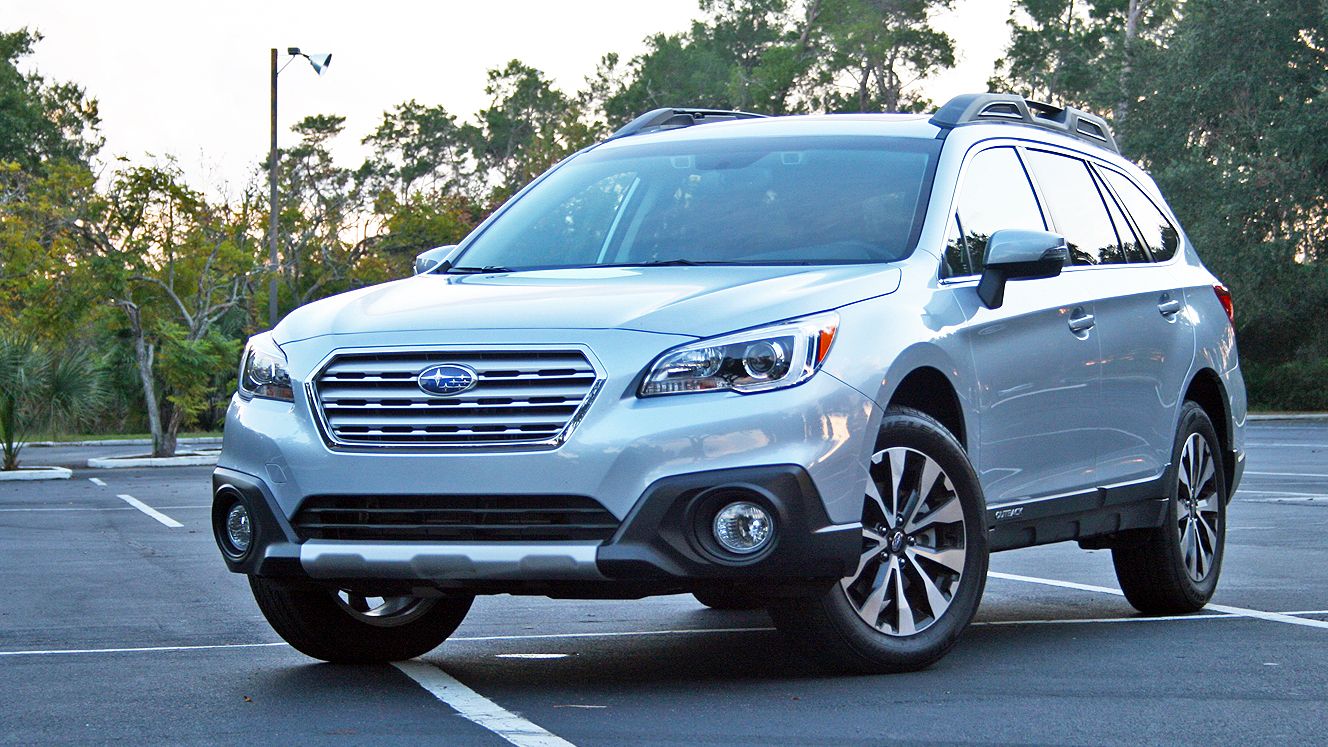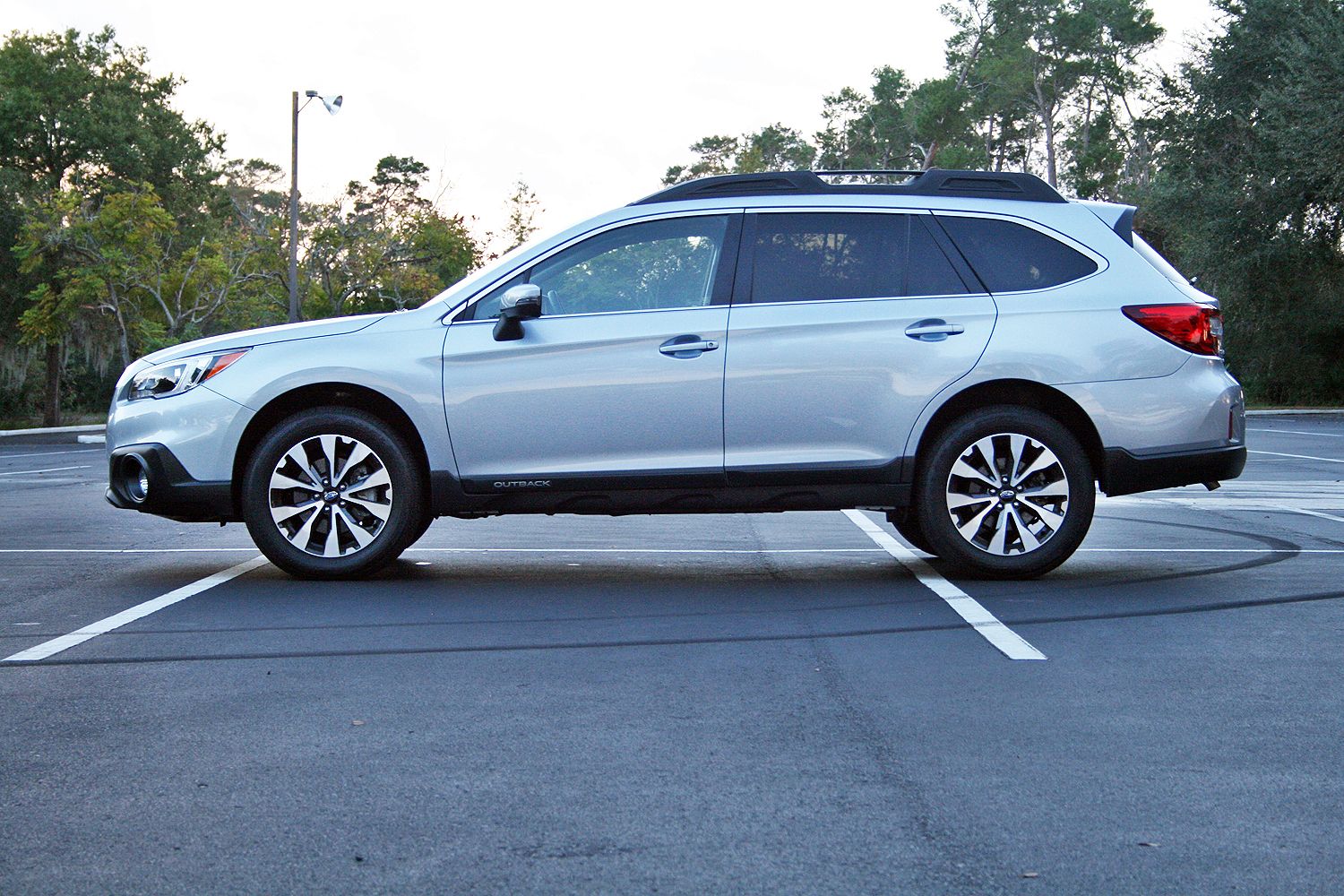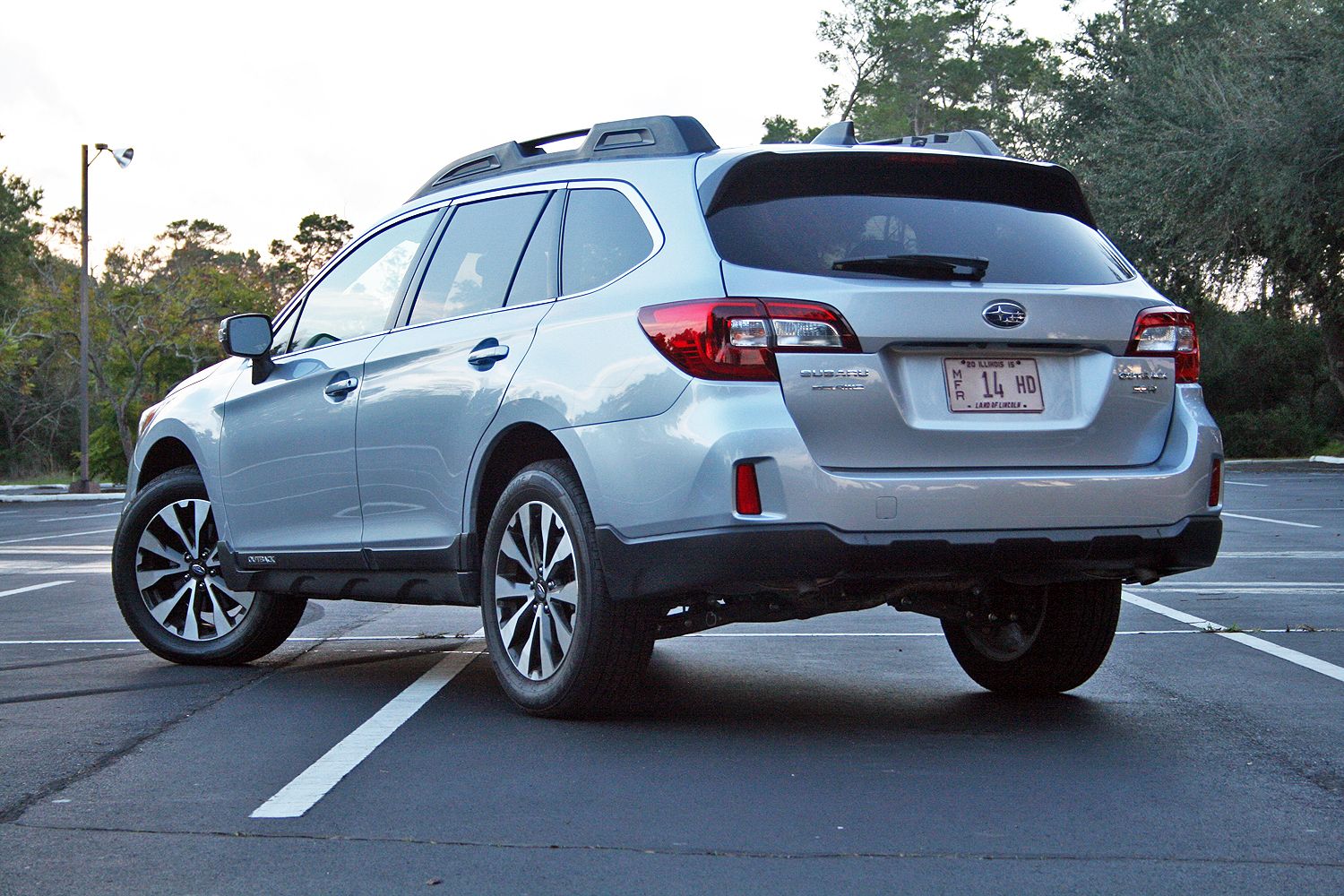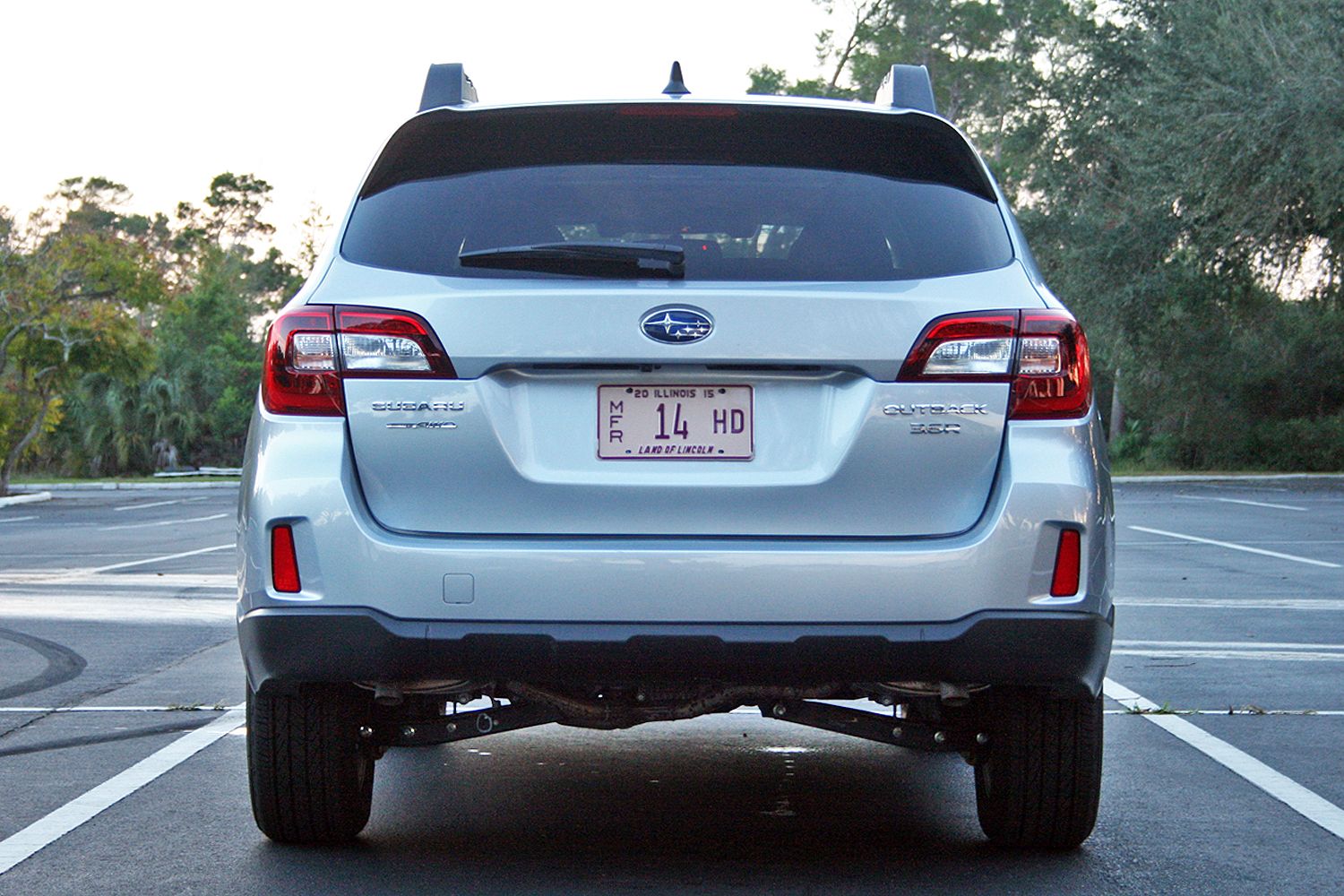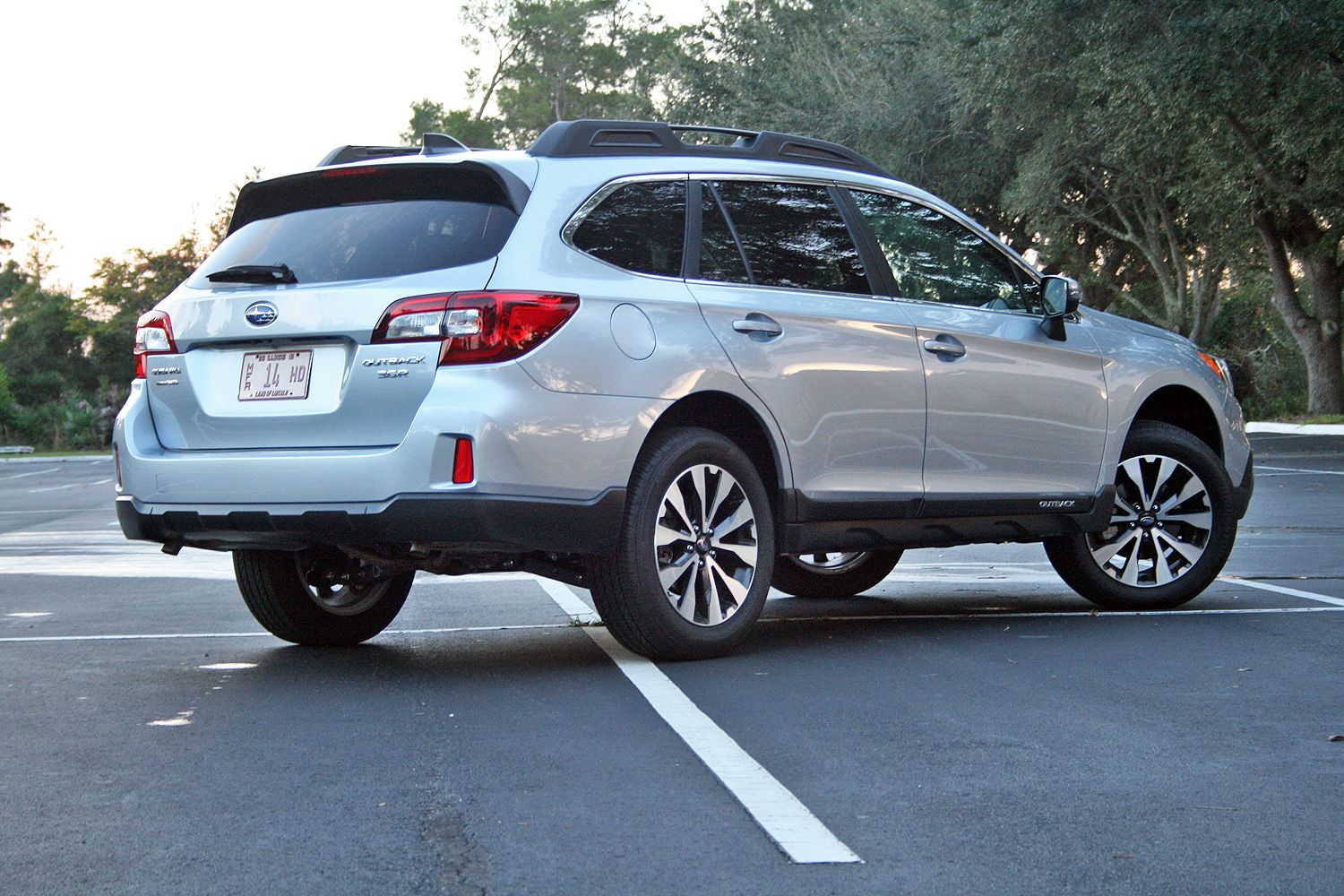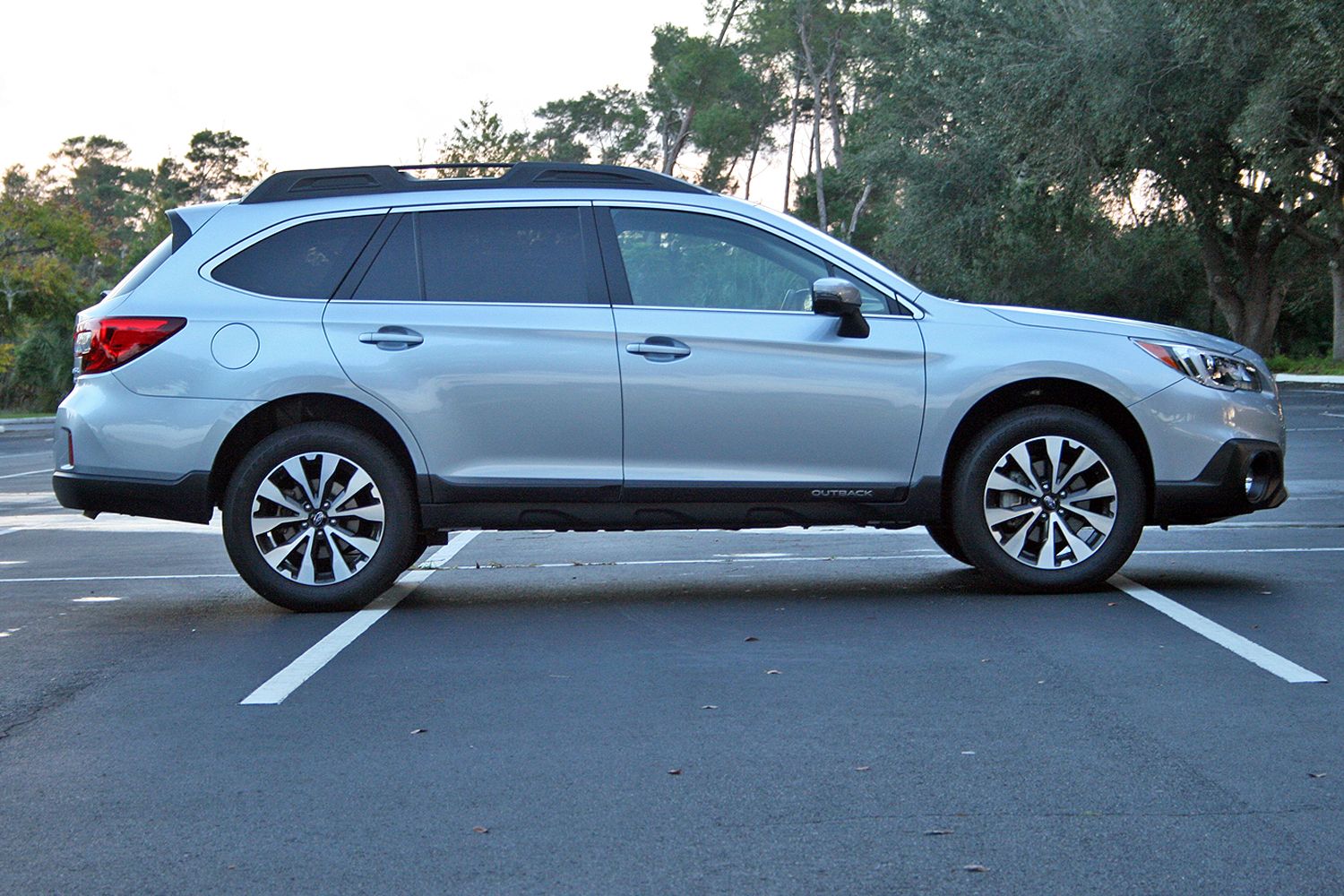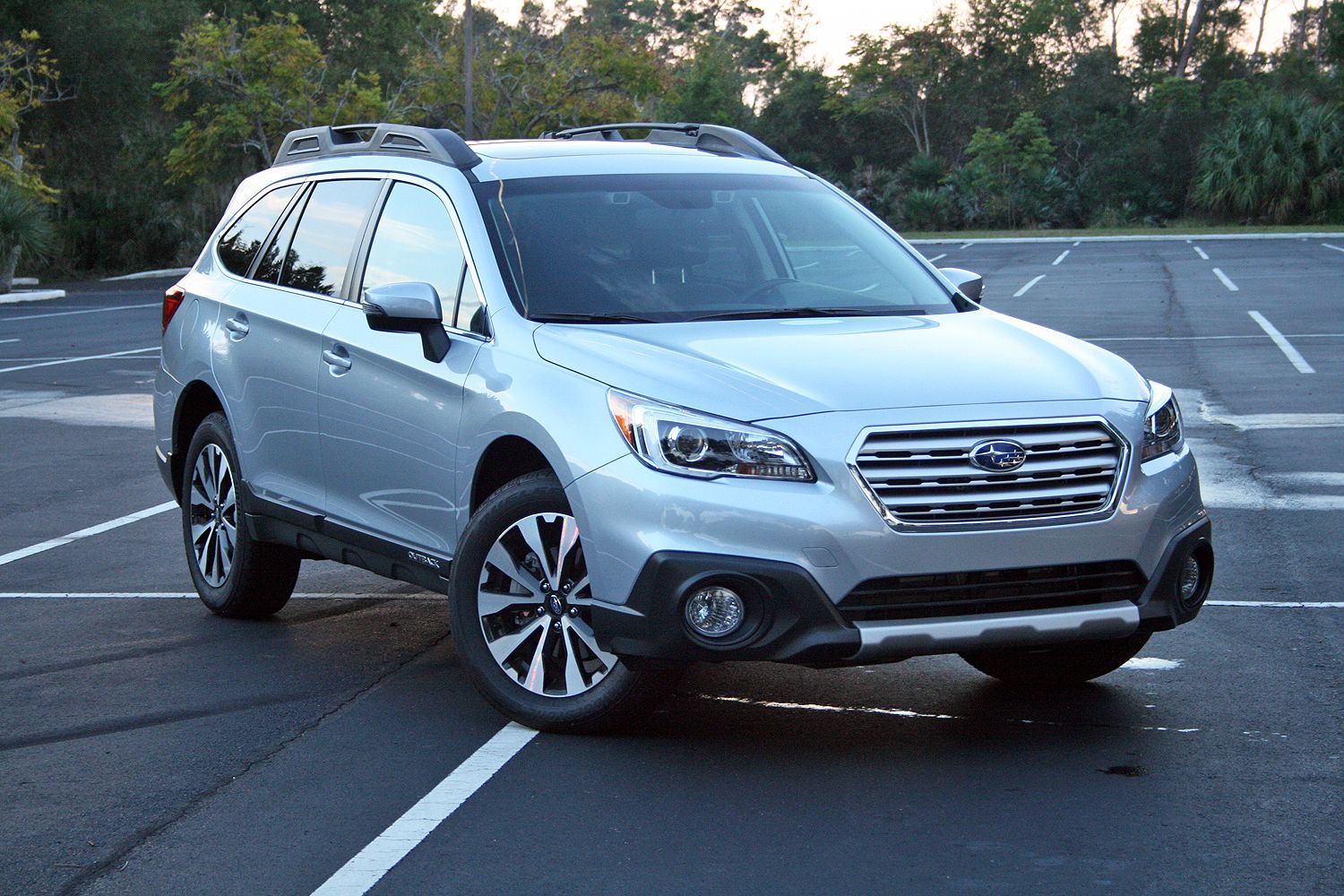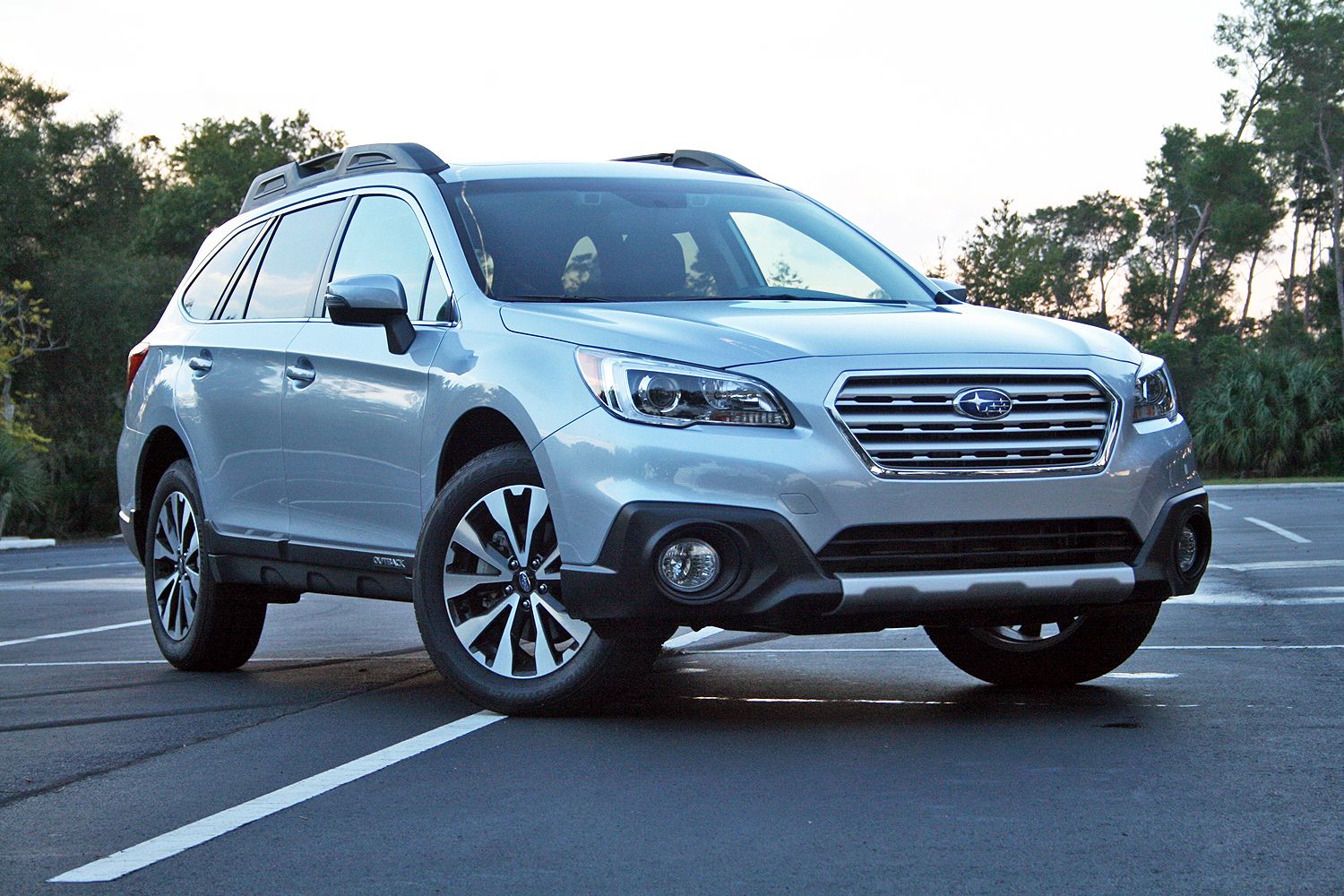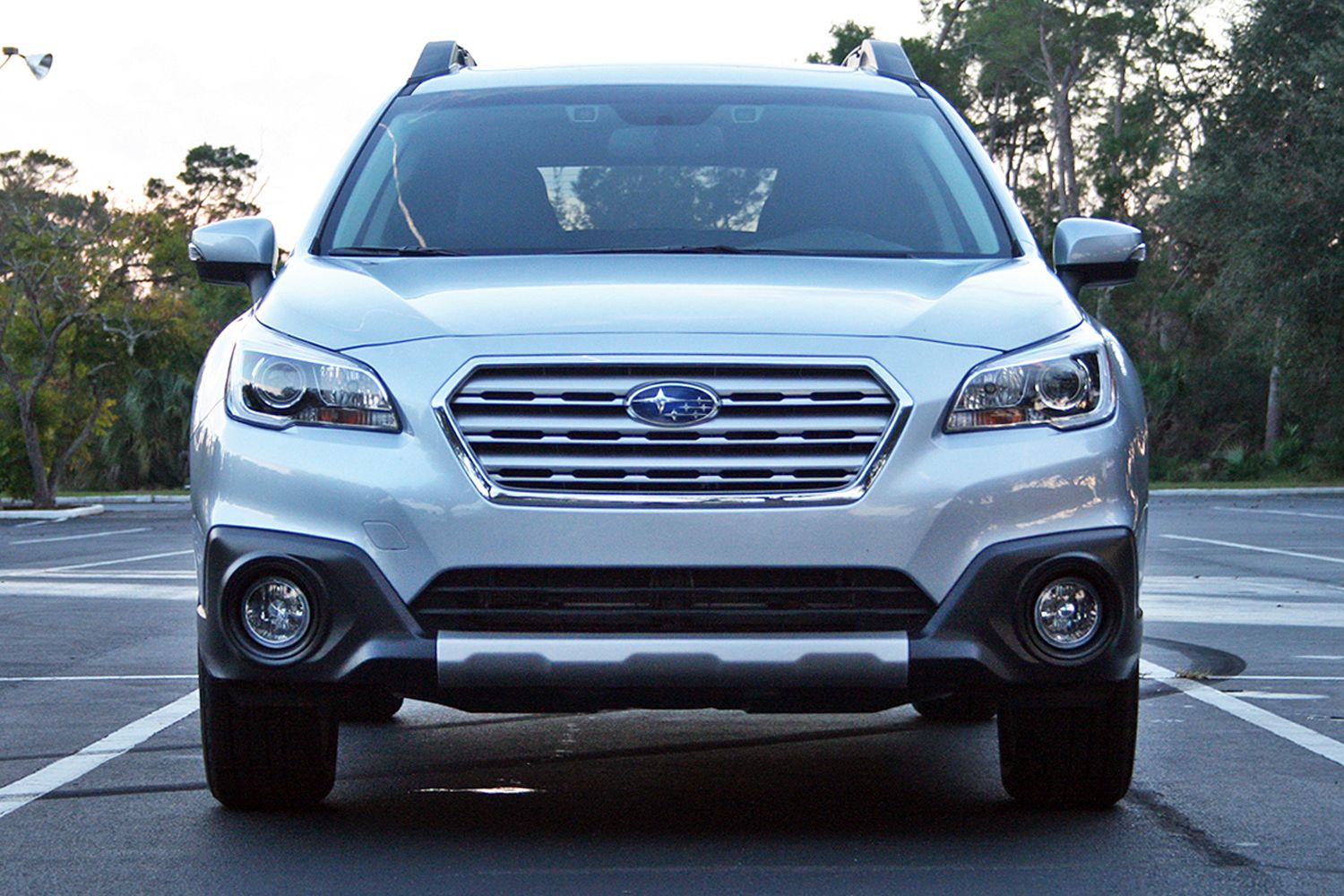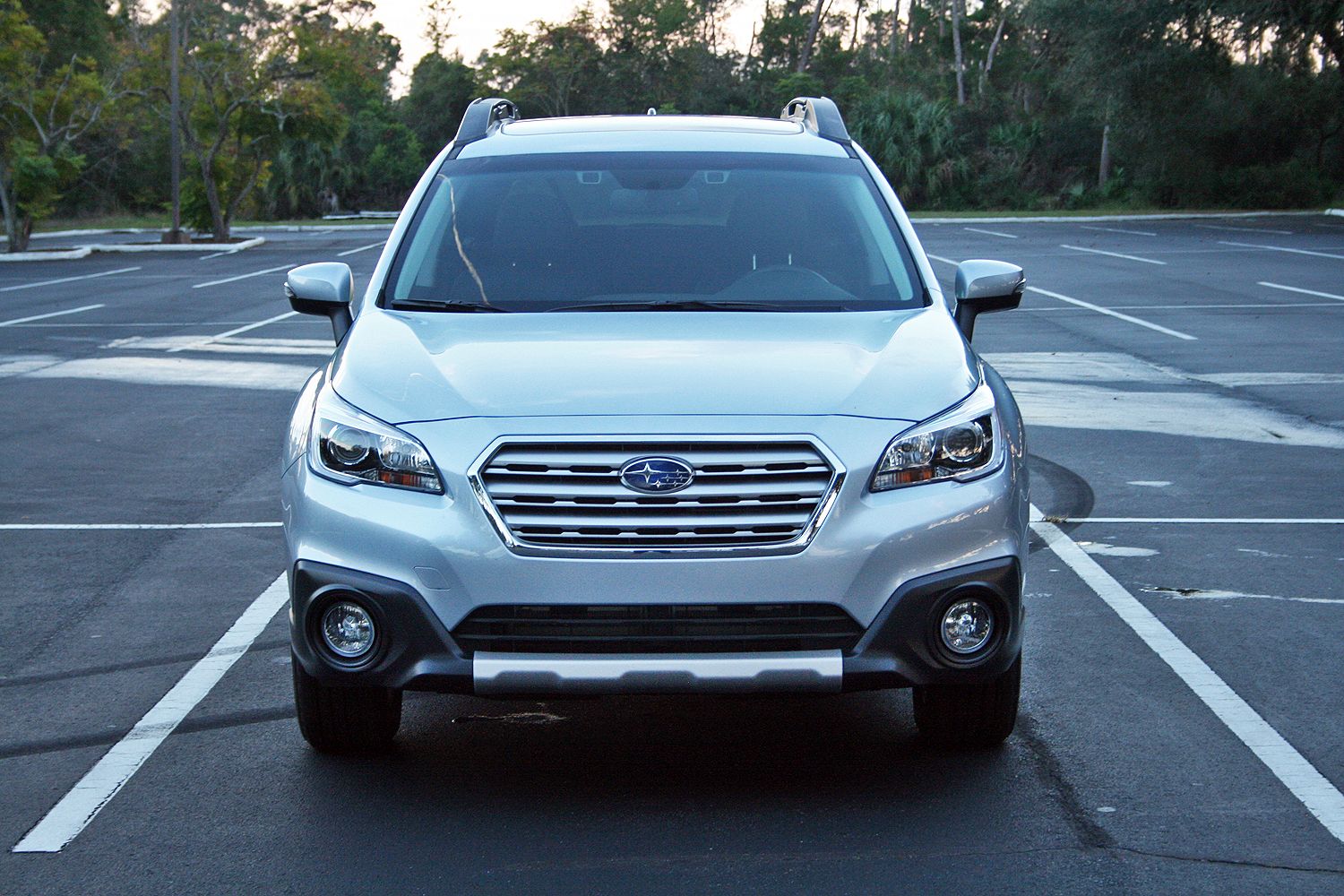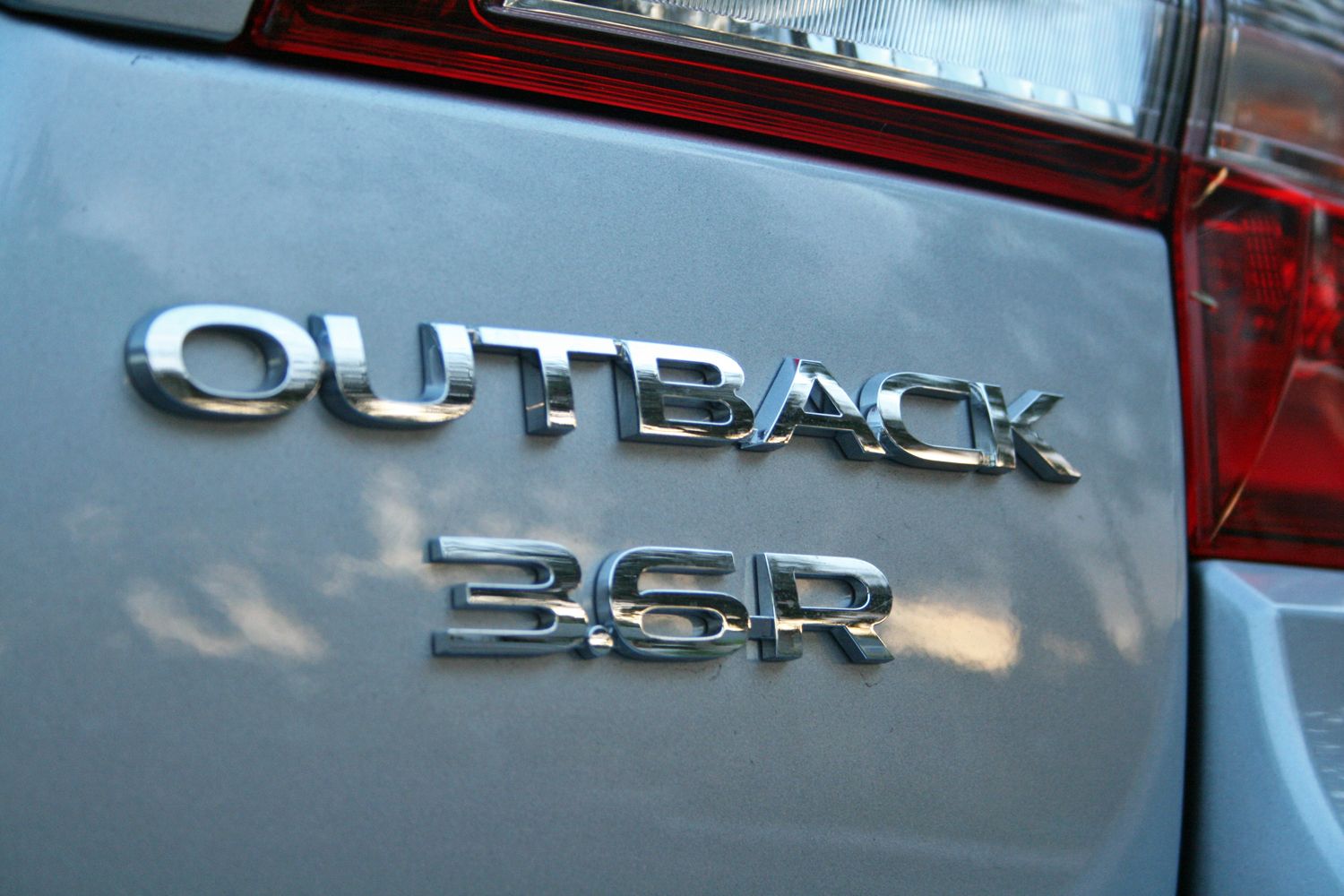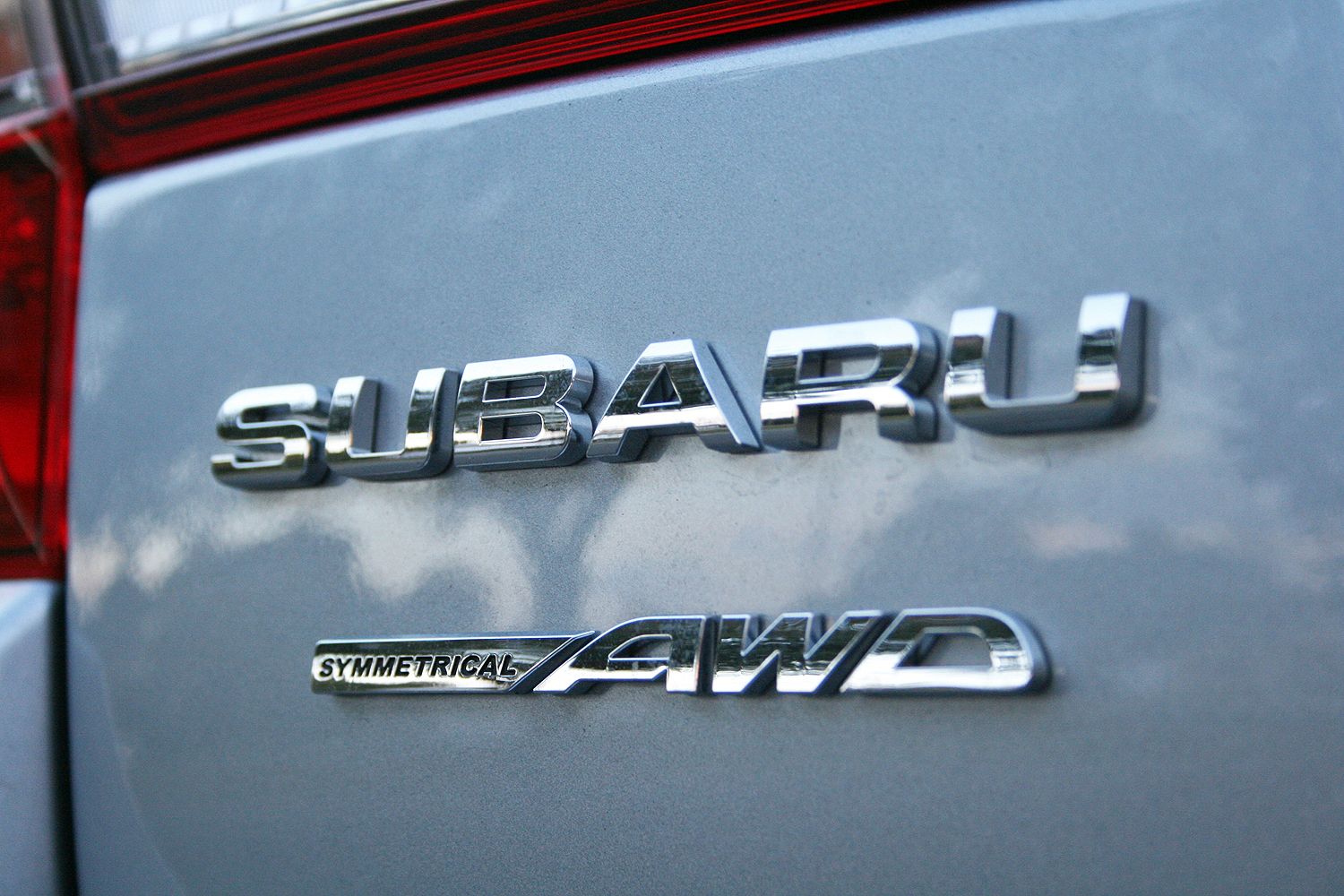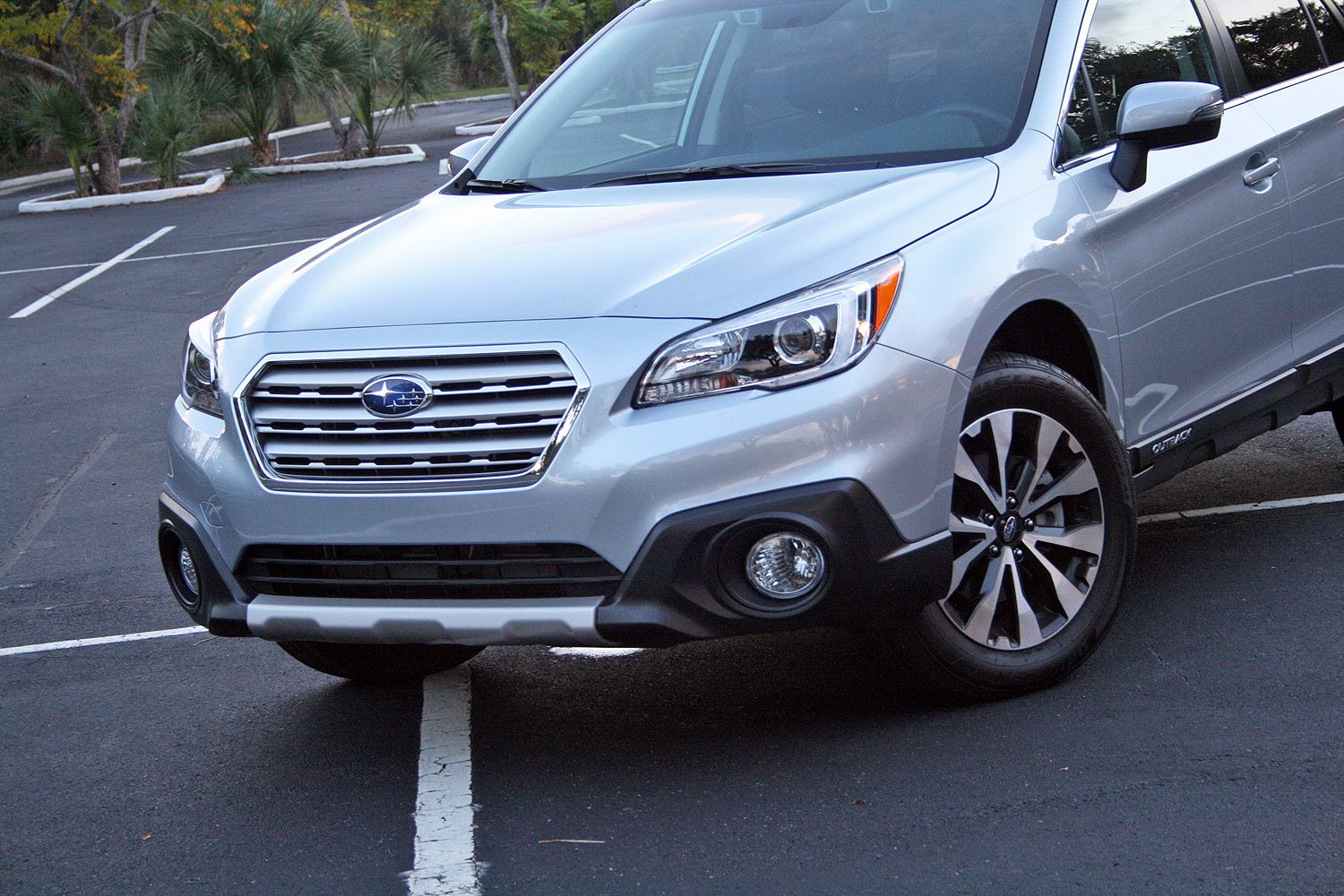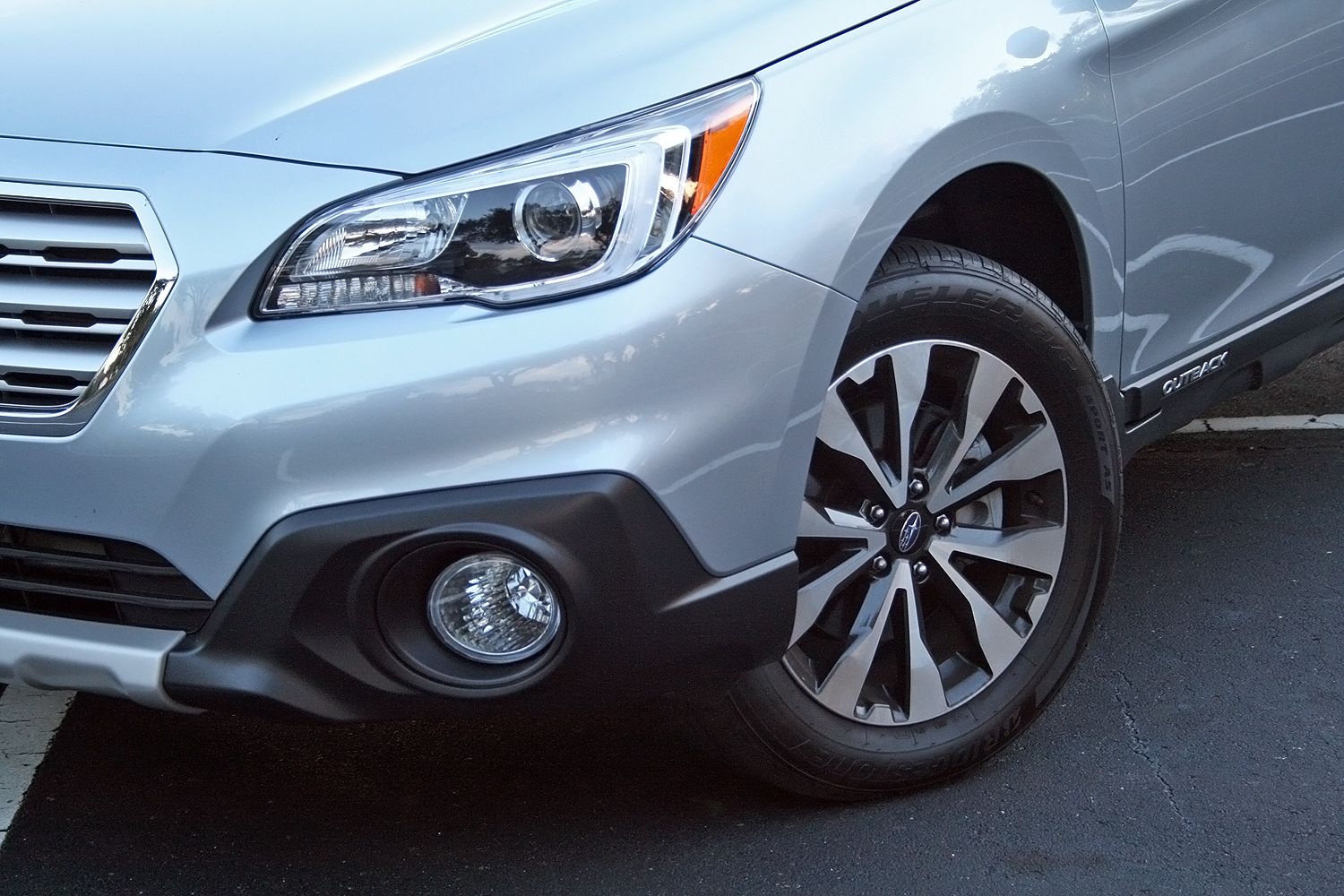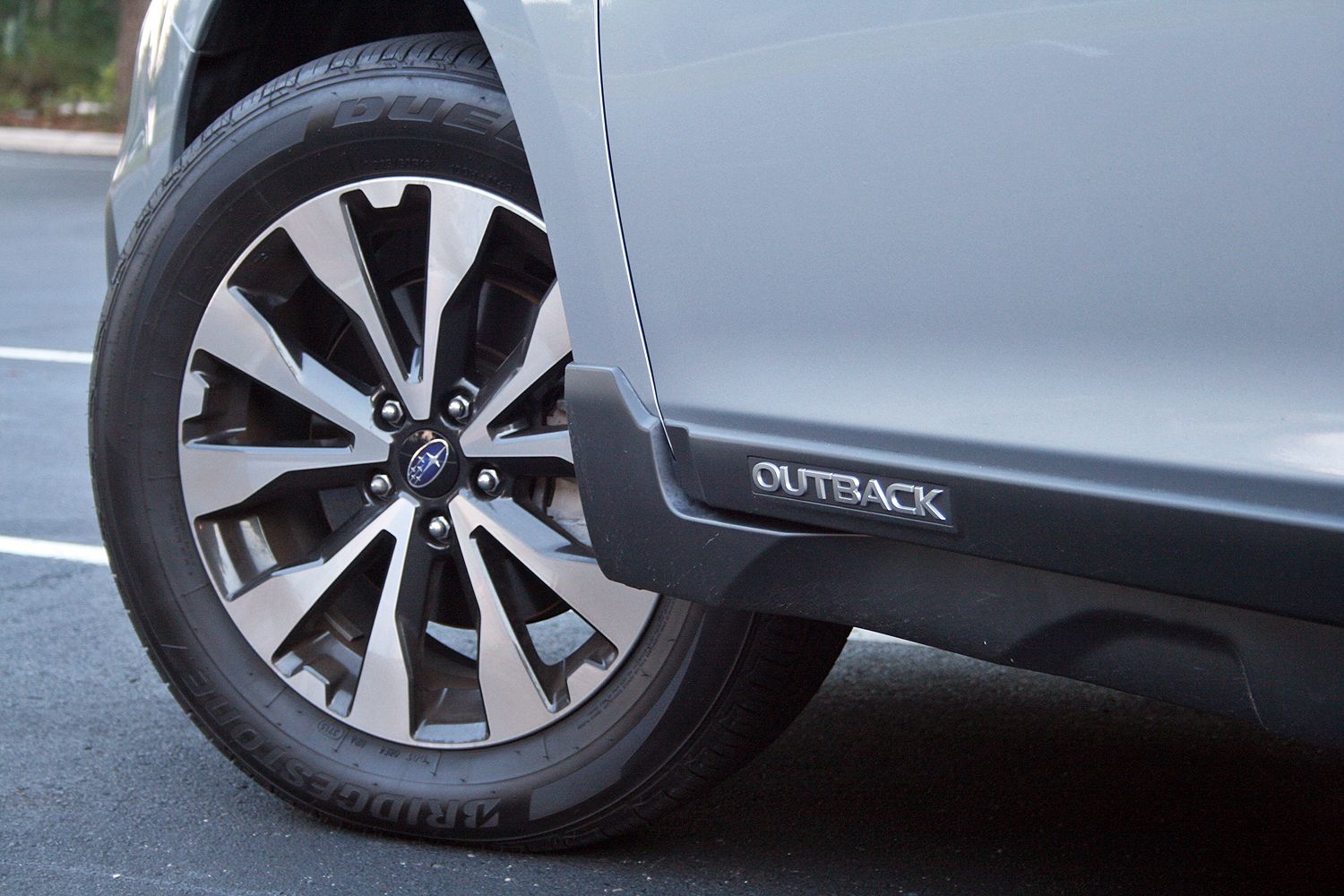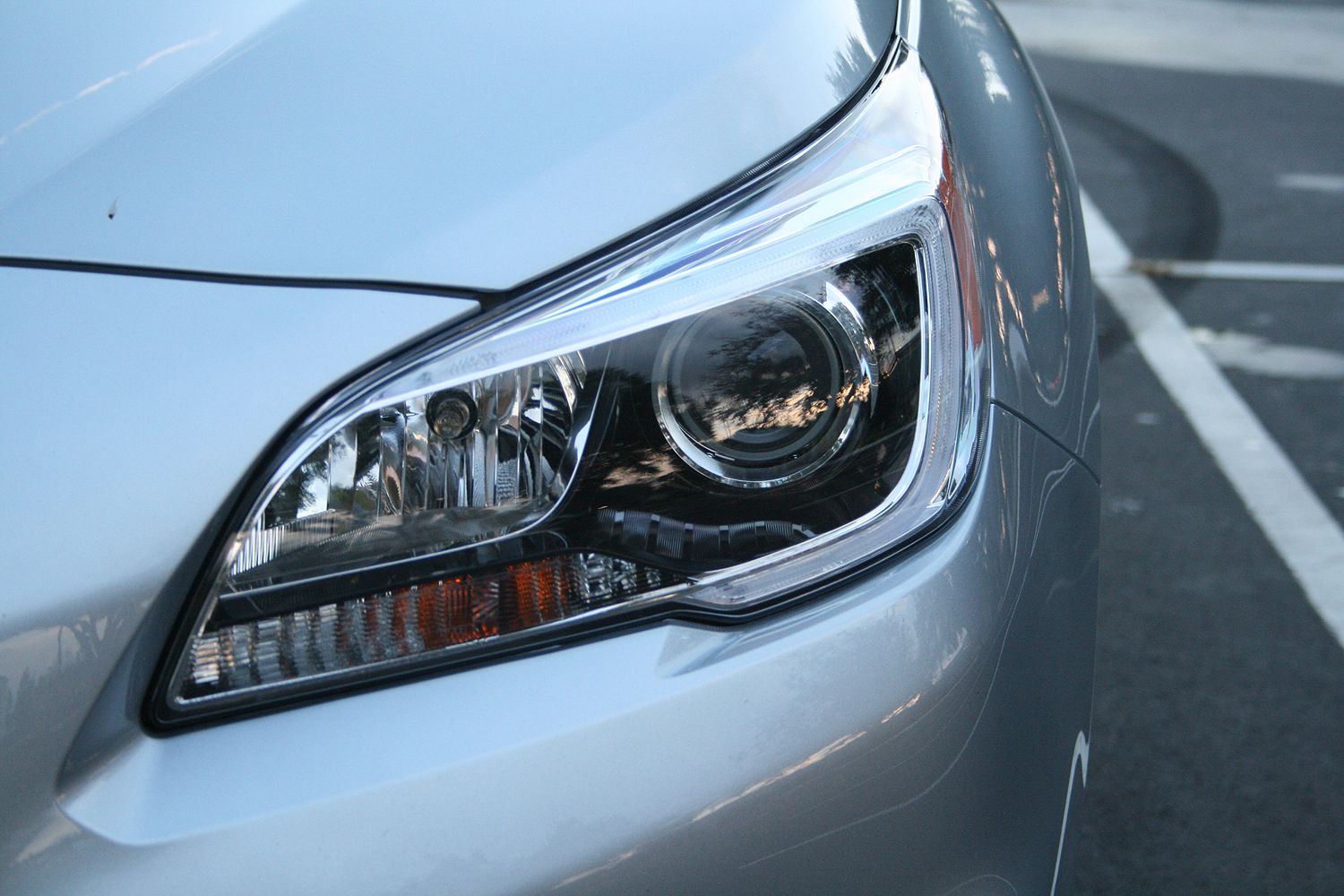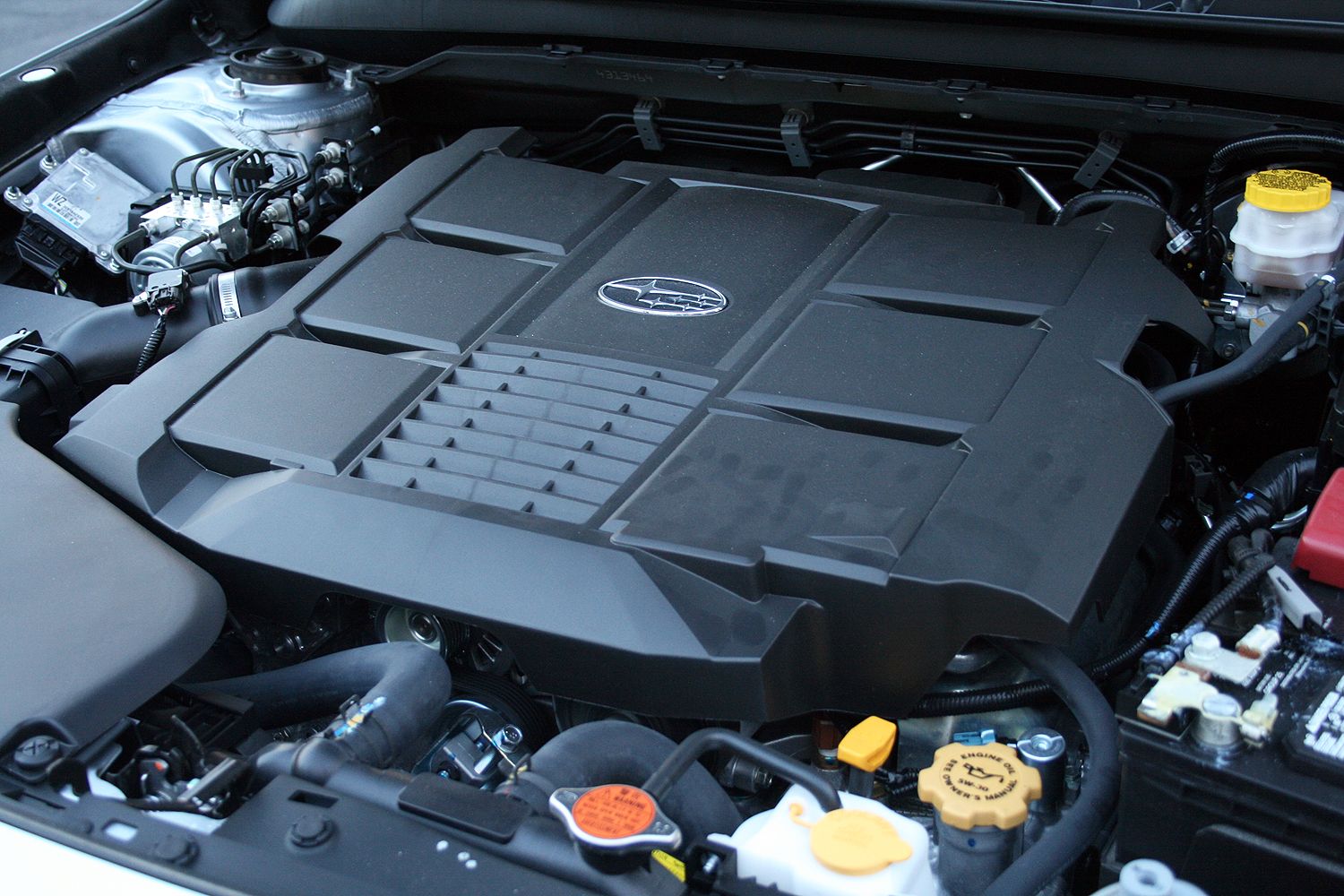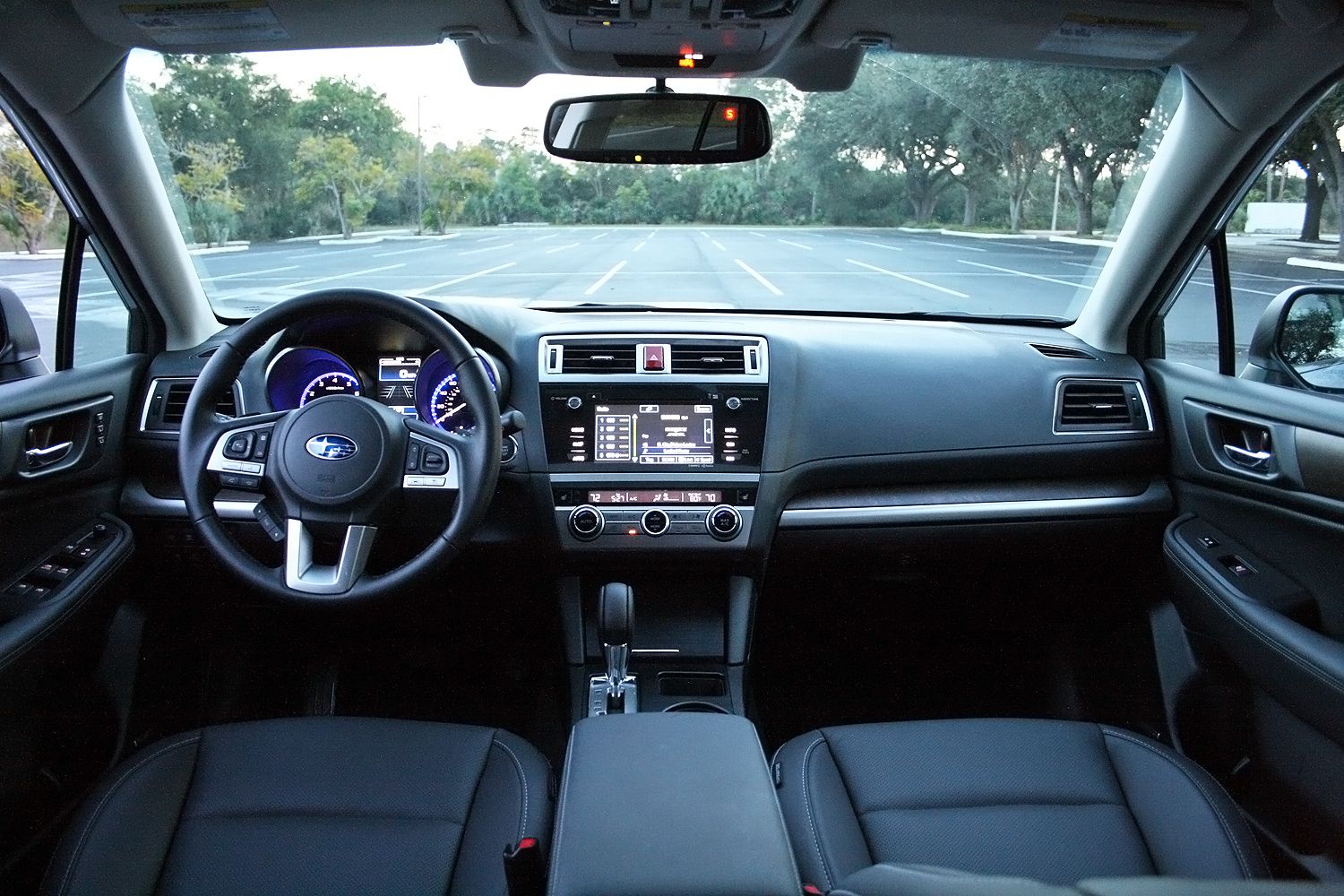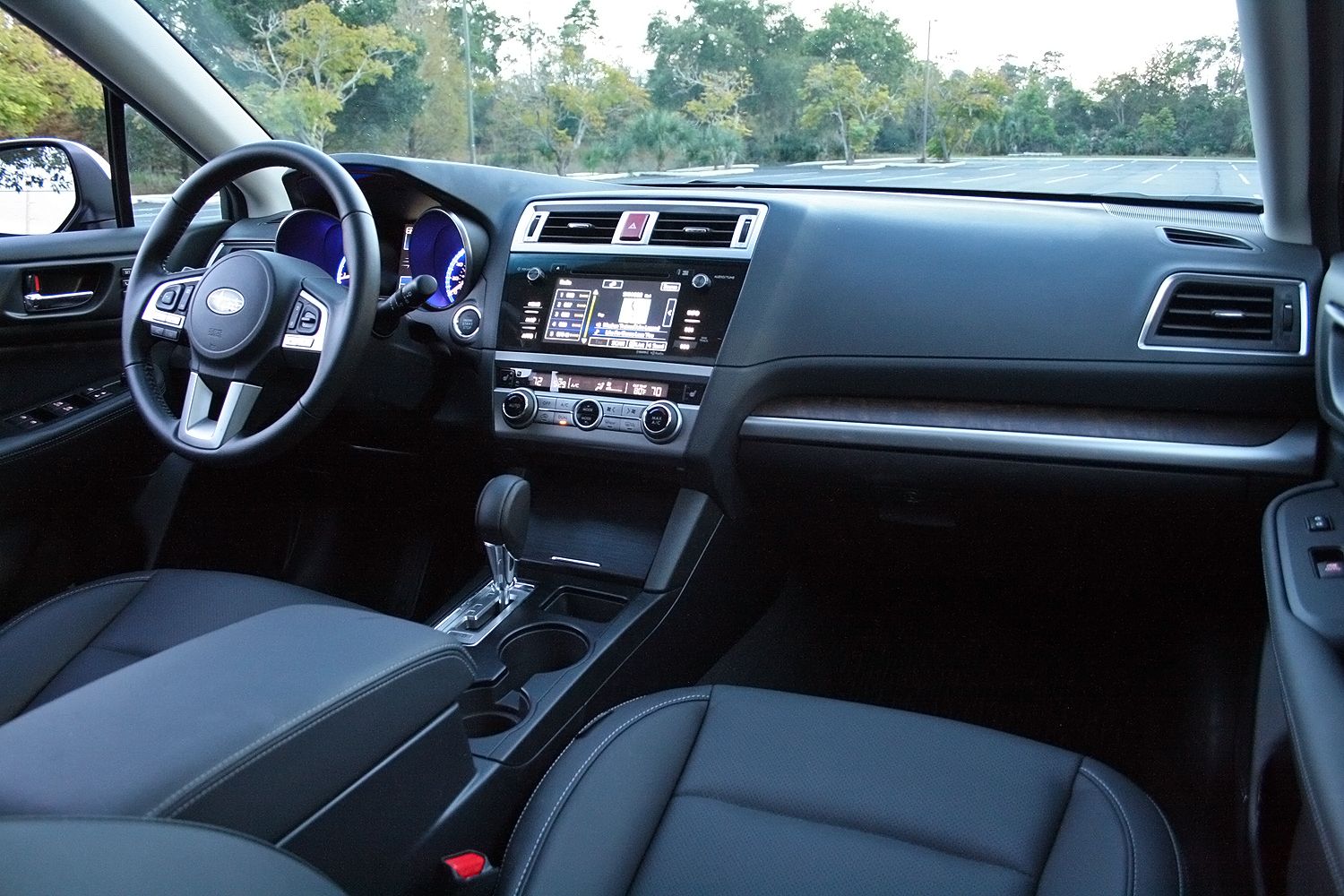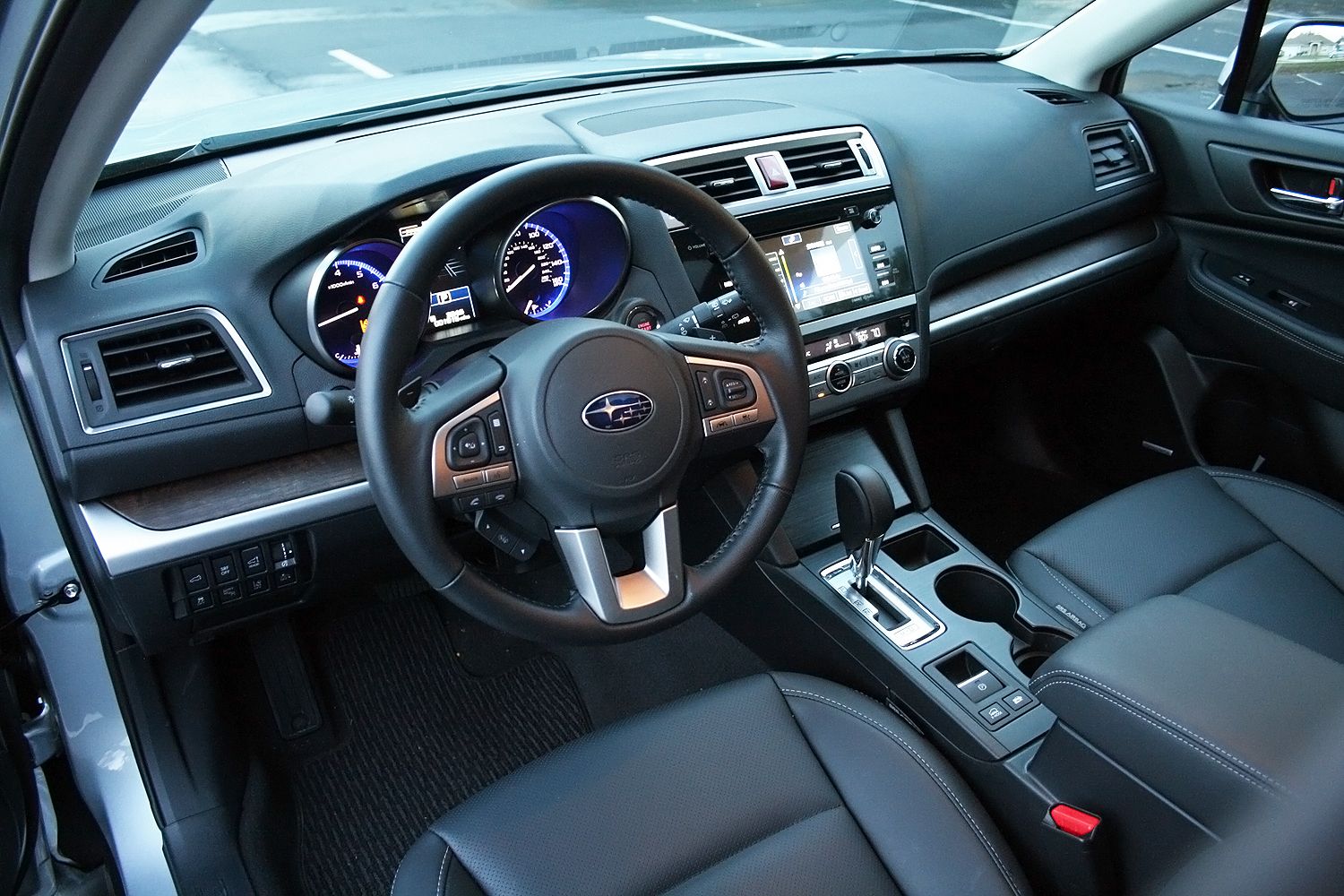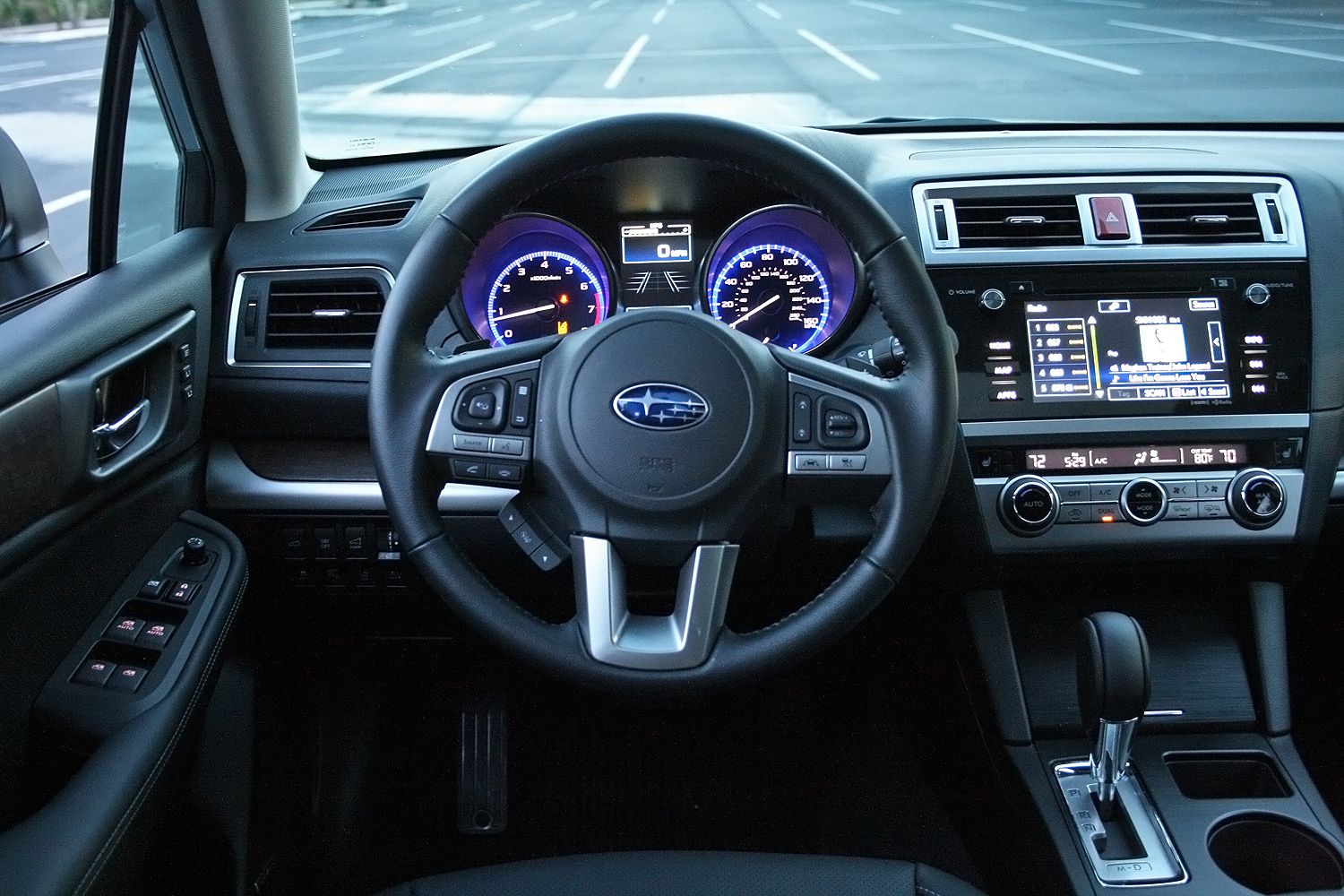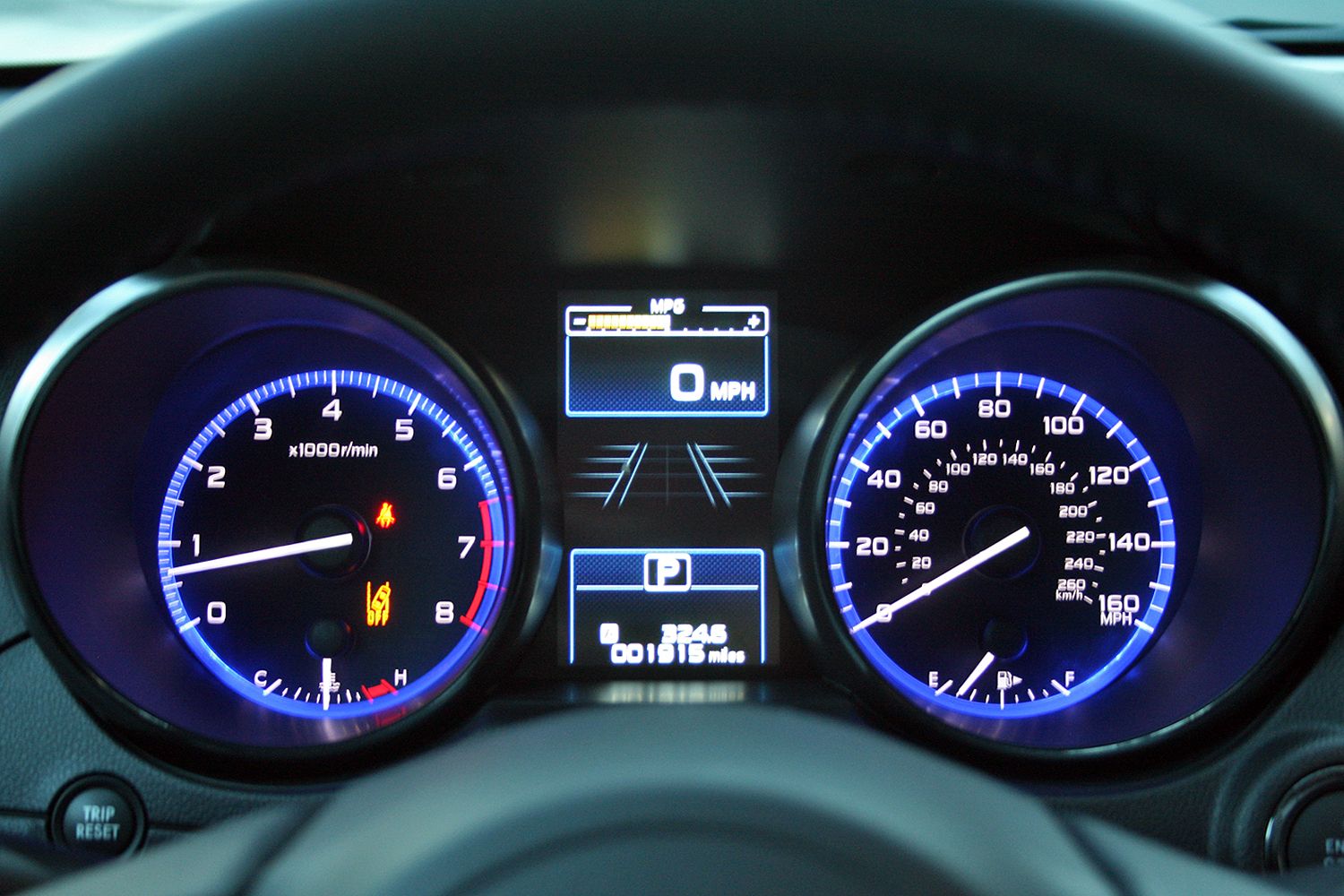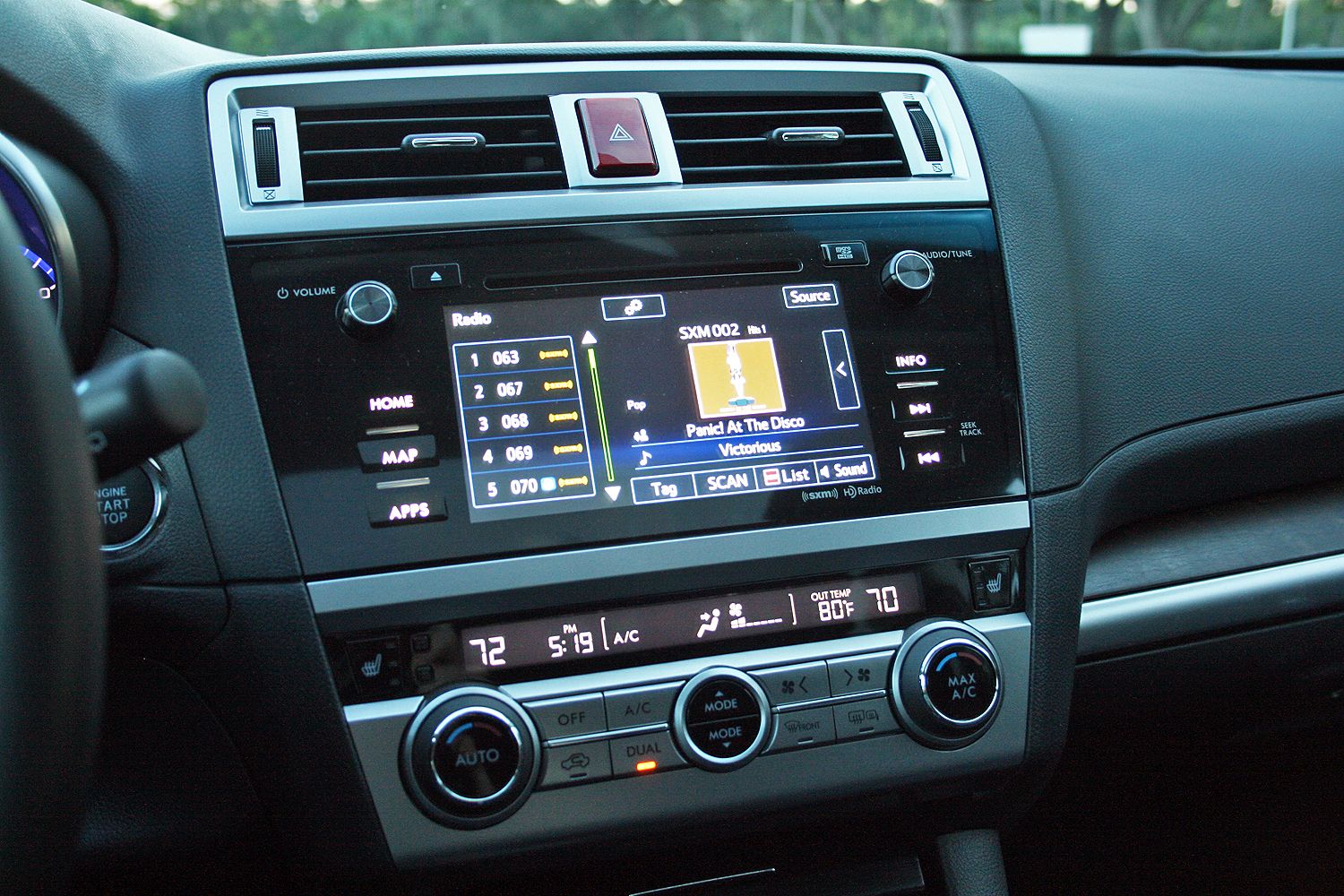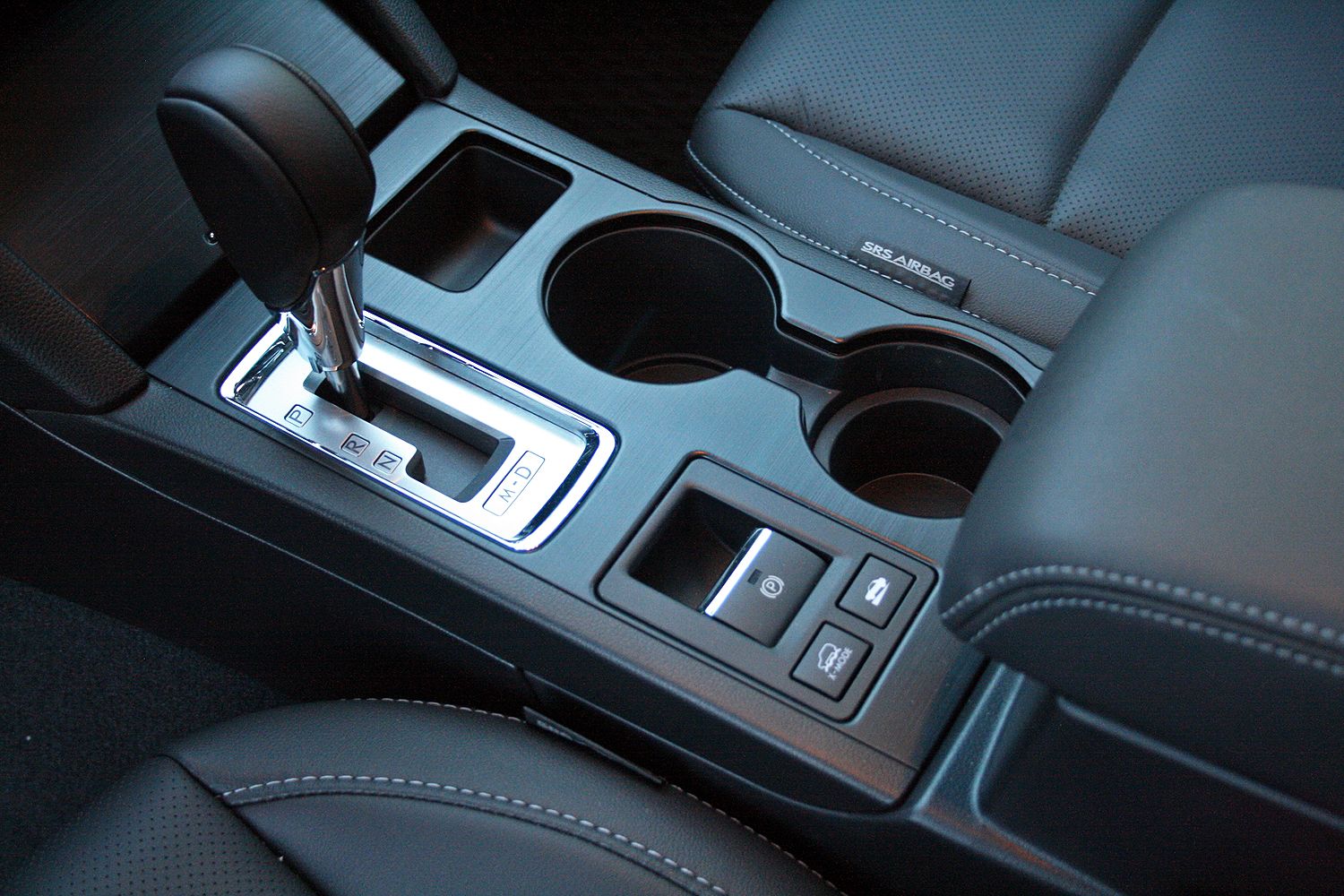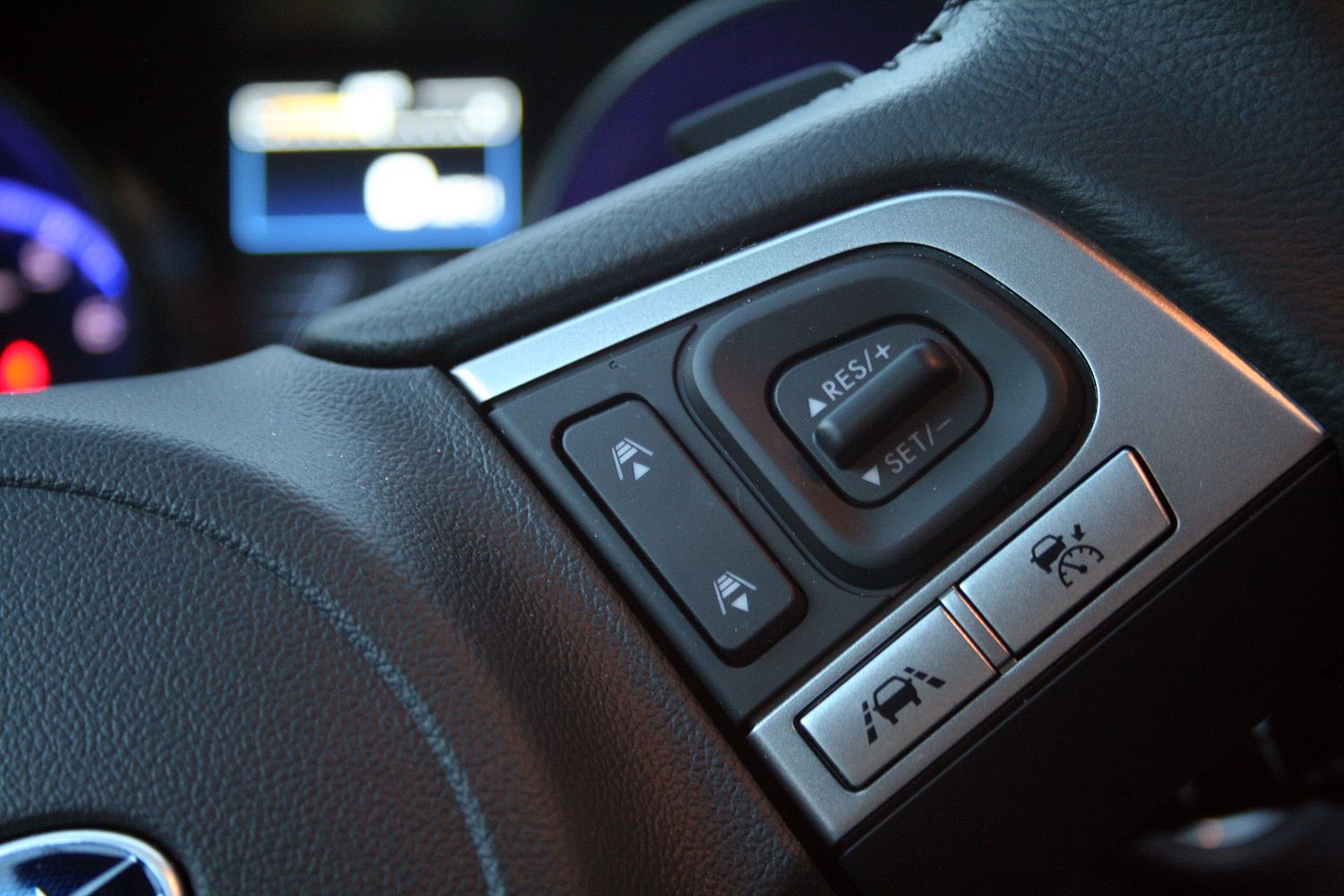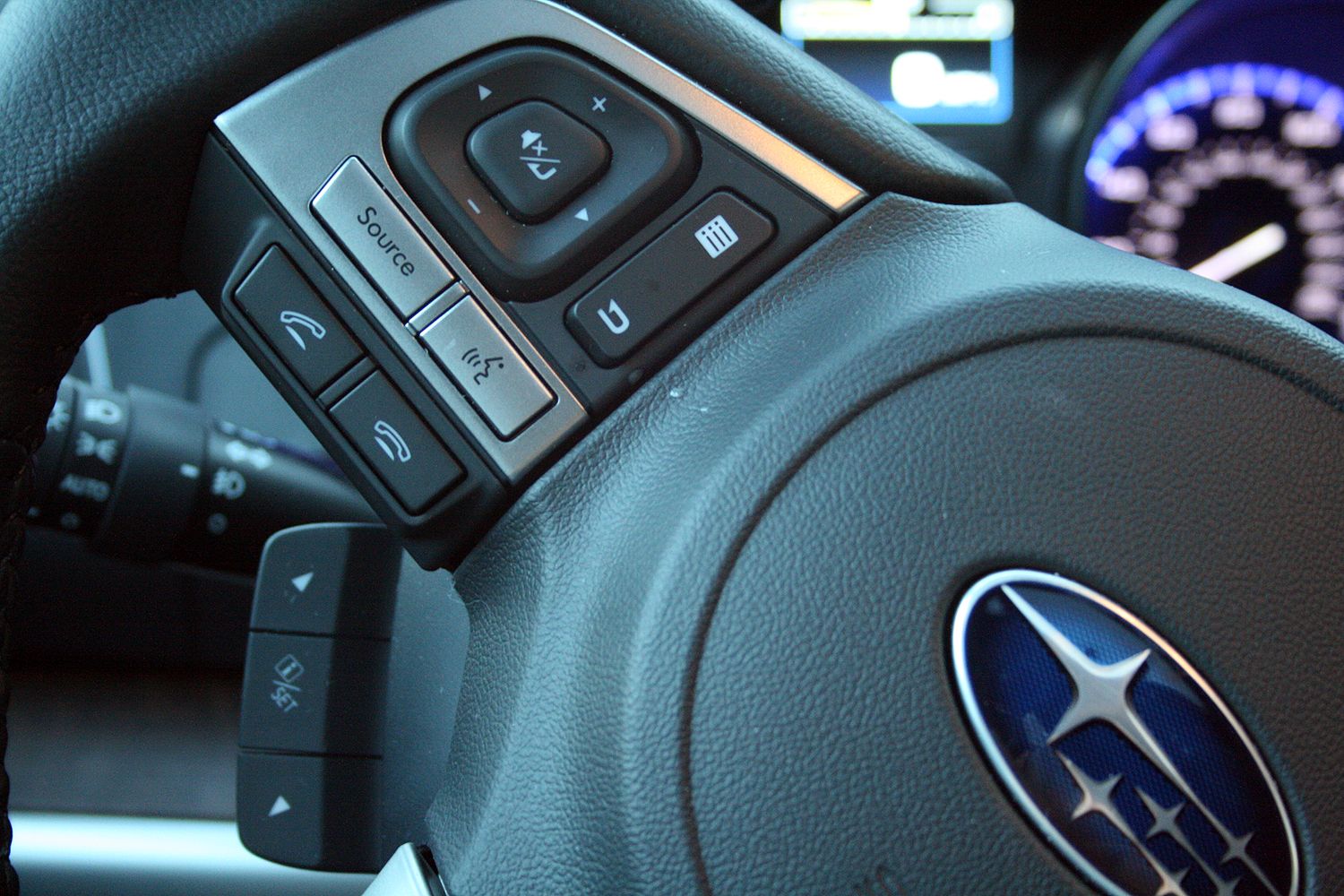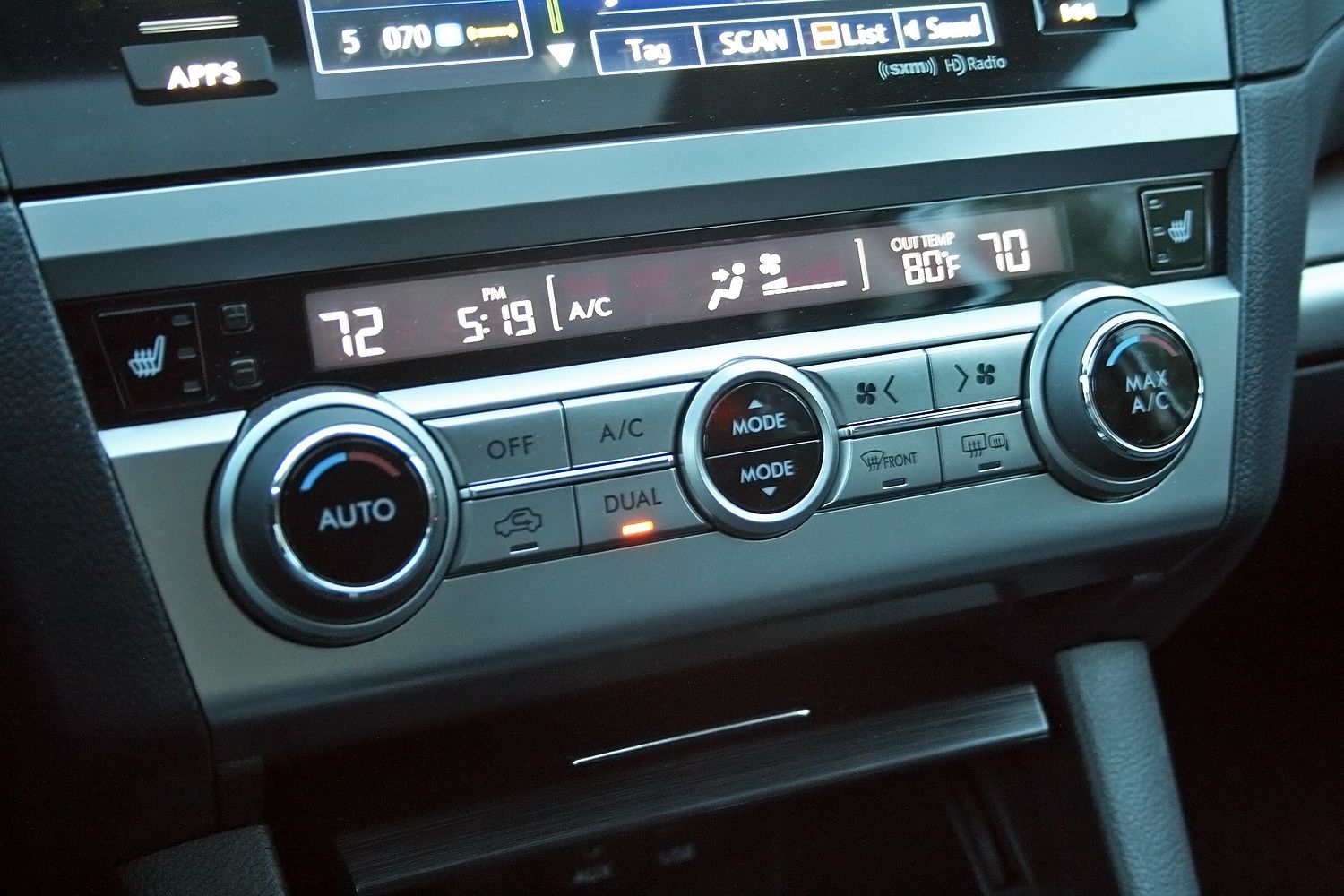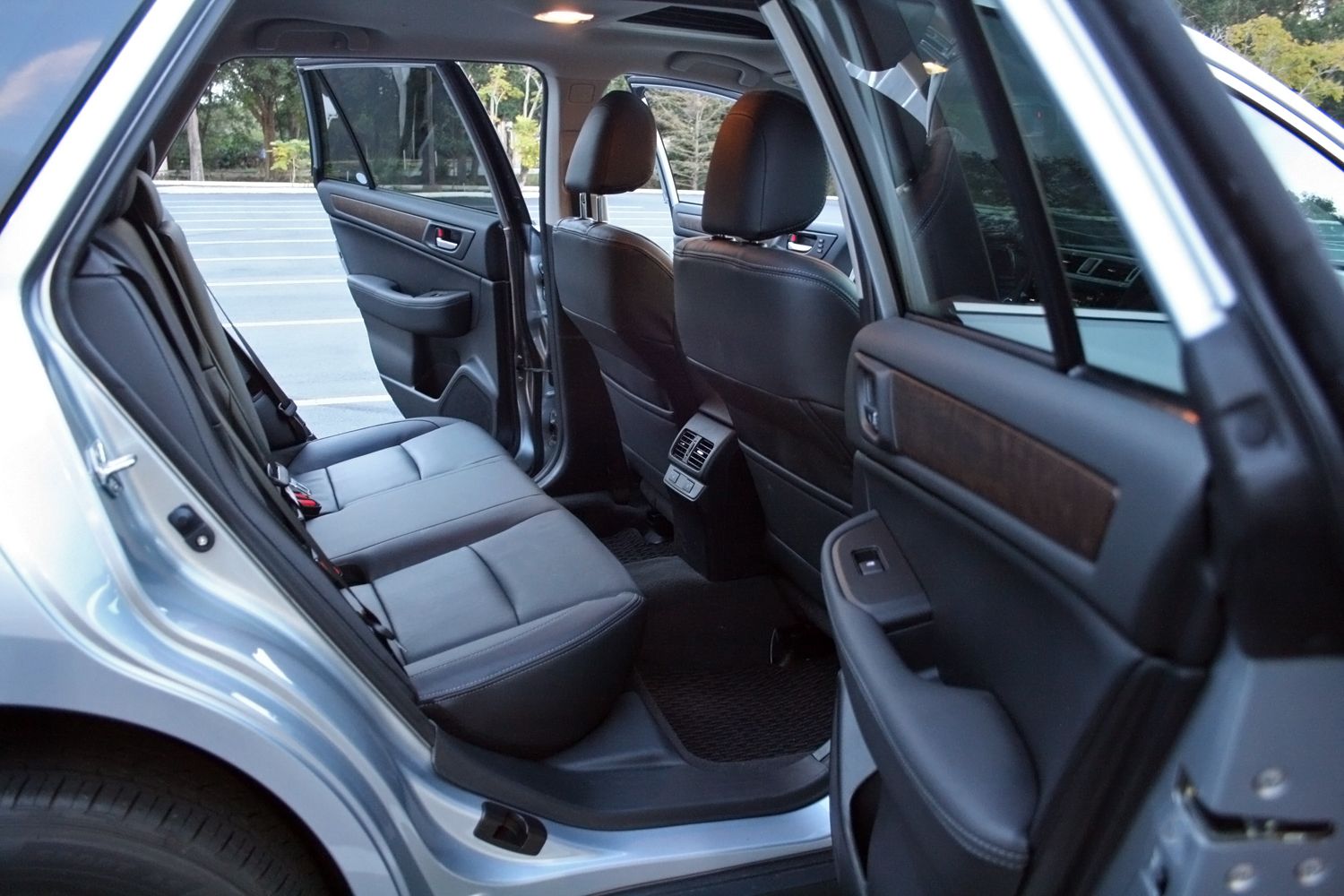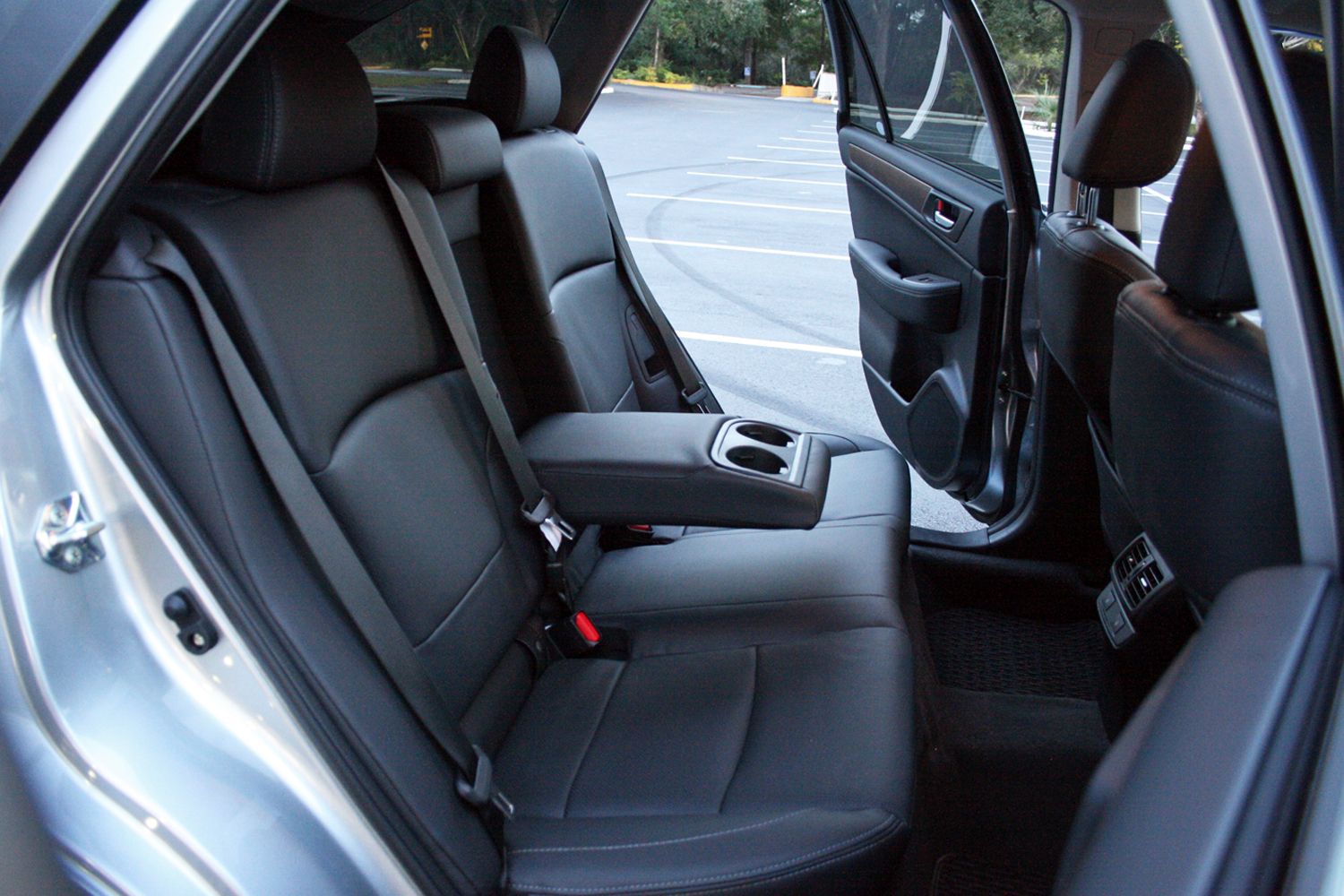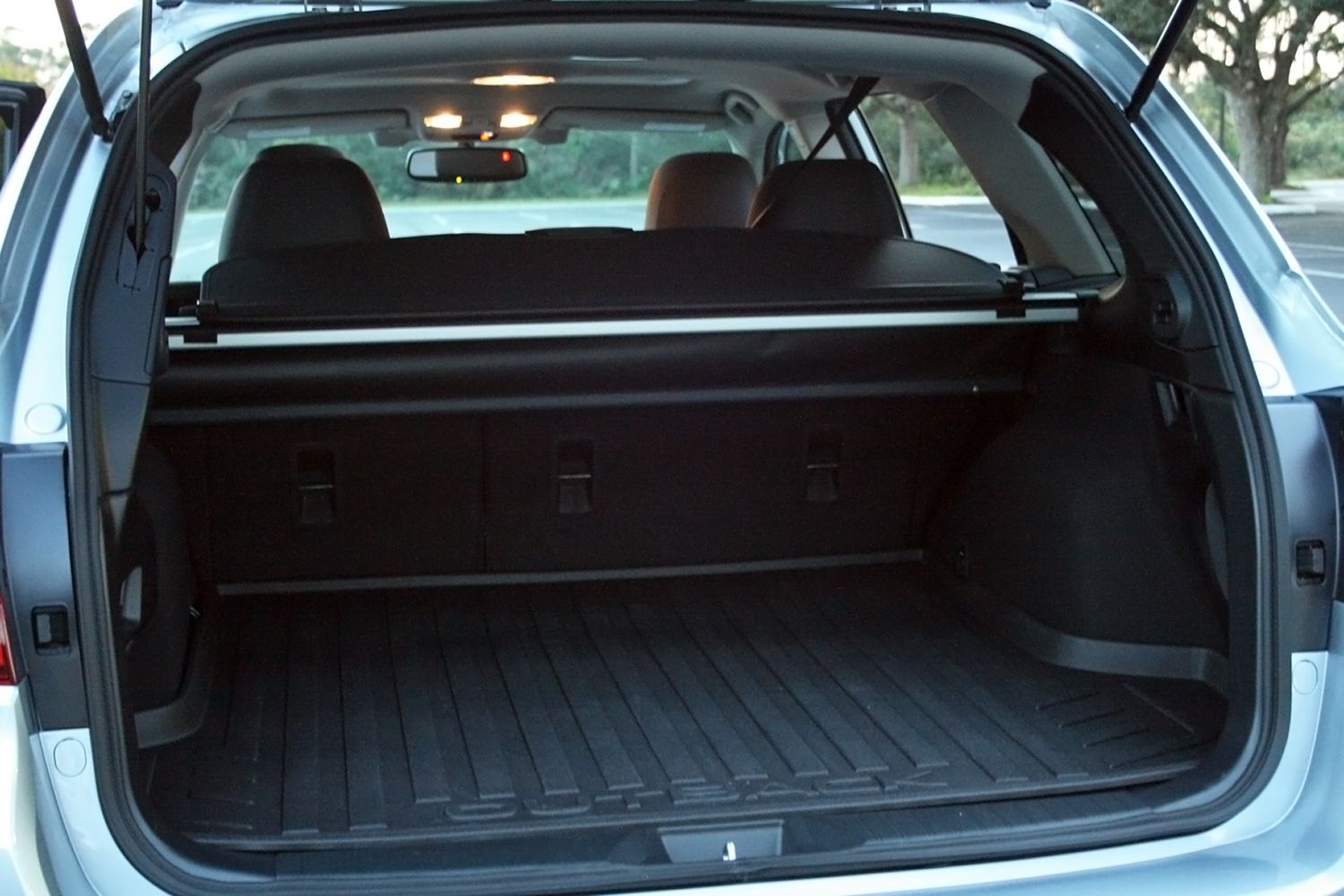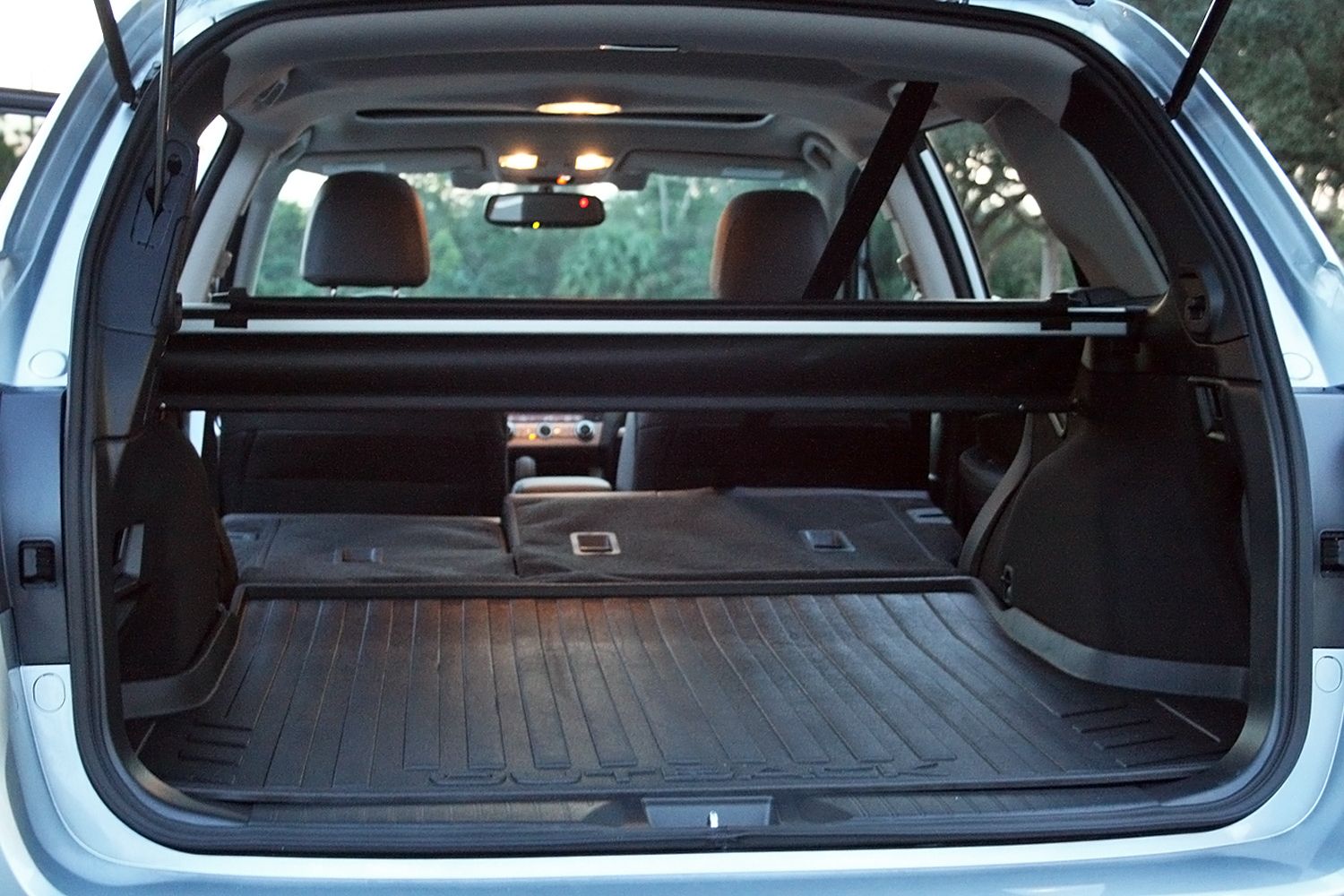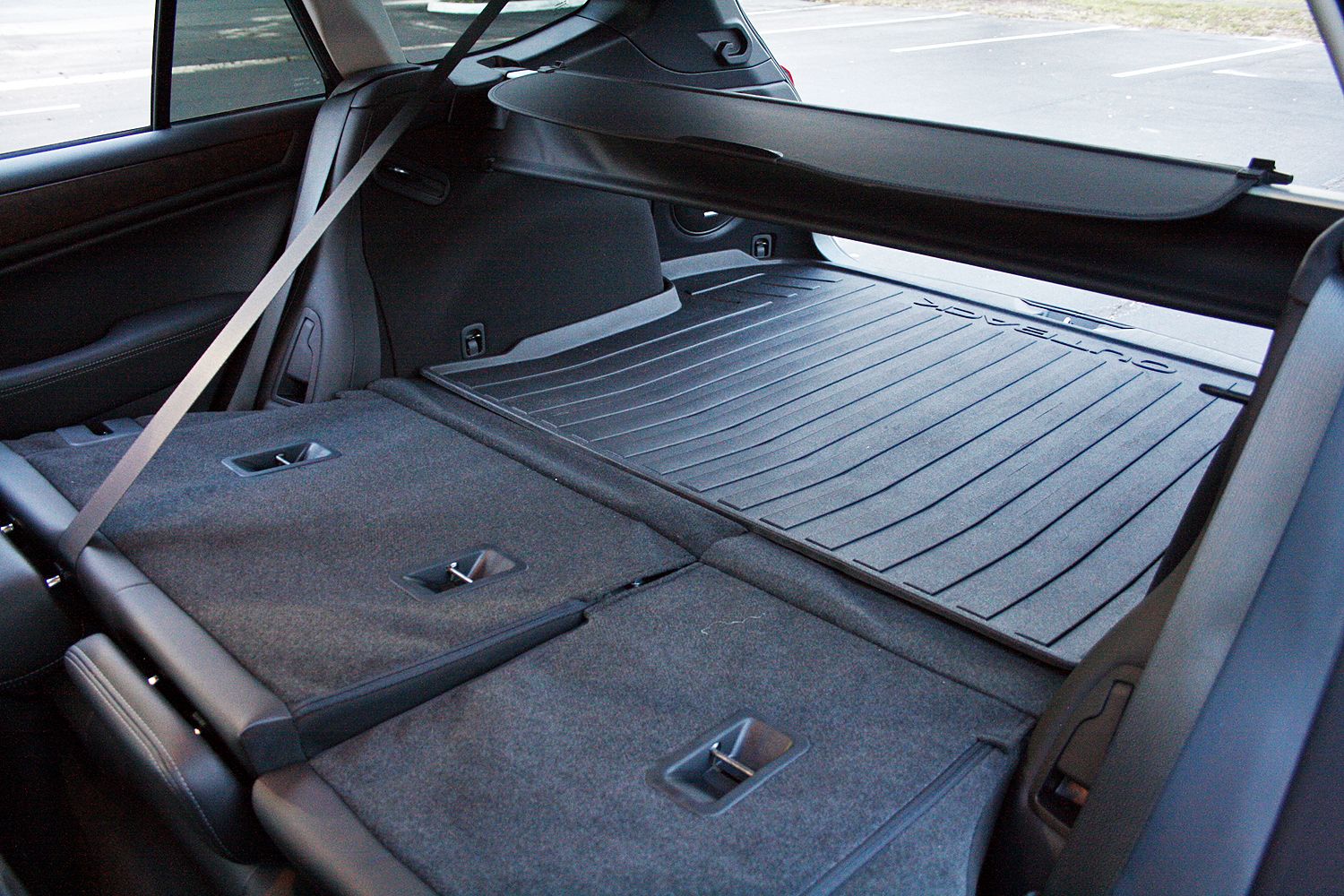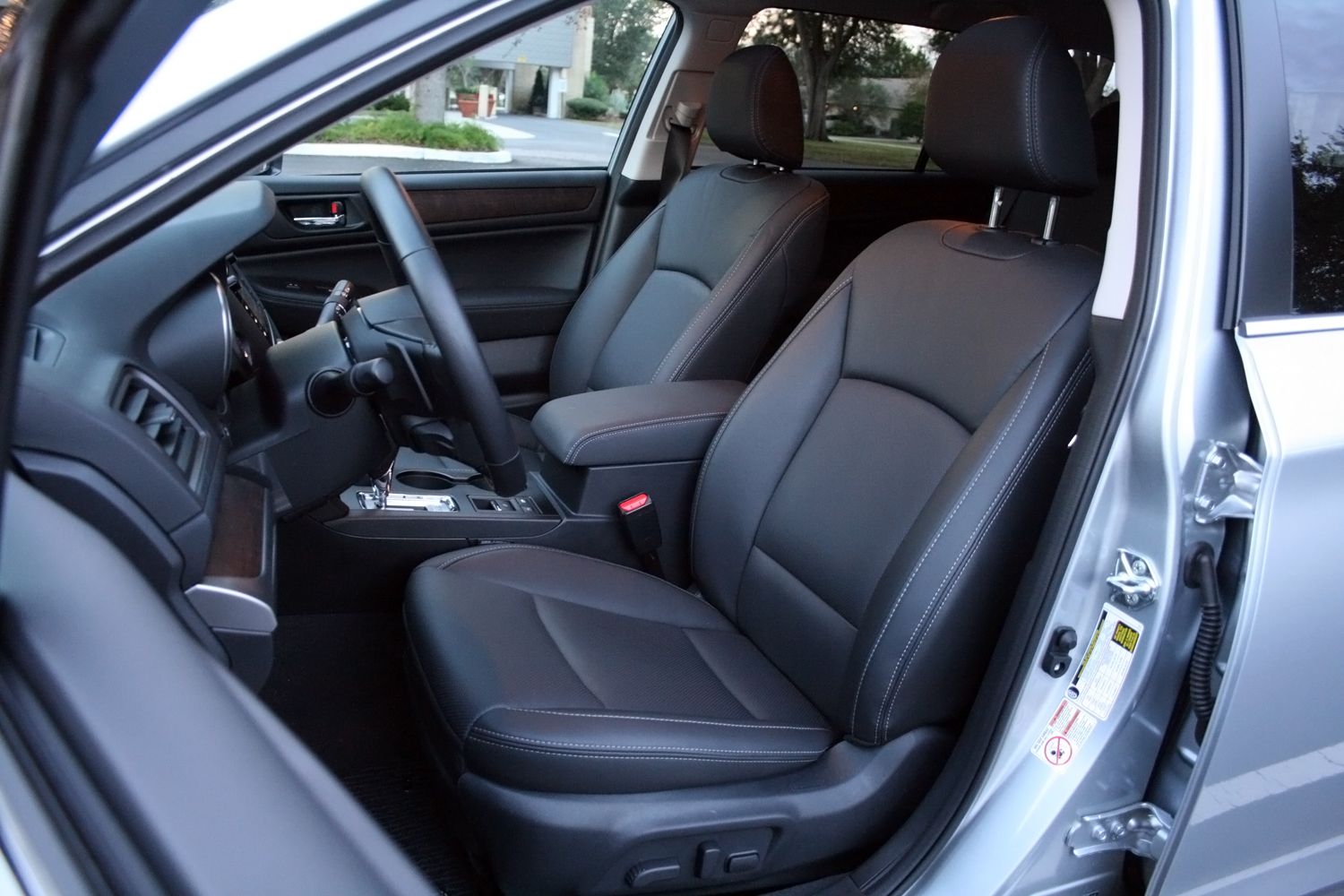The venerable Subaru Outback has been around in the U.S. since 1995 when Subaru->ke86 added a wagon->ke143 version of its Legacy->ke1402 sedan to its lineup. Now some 21 years later, the Outback->ke1052 is still going strong, especially after its last generational change for the 2015 model year. Nothing changes for 2016, a fact that’s just fine with most Subaru loyalists and fans.
The 2015 redesign mirrors that of the Legacy sedan, getting a cleaner exterior design and an updated interior, among other improvements. Both the 2.5-liter flat-four and 3.6-liter flat-six carry over, along with the CVT transmission. Neither are eye-opening performance monsters, but both work well at moving the Outback down the highway or trail.
Speaking of trails, the Outback comes with Subaru’s full-time AWD system and 8.7 inches of ground clearance – only 0.1 of an inch less than a Jeep Wrangler!->ke425 And then there’s X-Mode, complete with Hill Decent Control, ready to tackle the really rough stuff. The Outback is no rock crawler, but it will take you anywhere you’d want to go short of needing solid axles, mud tires, and a winch. Perhaps that’s why the Snowbelt states are covered in Outbacks.
Despite the lack of winter weather in Central Florida, I recently had a week to spend with the 2016 Outback. My tester came packed with the 3.6-liter, dressed in the Limited trim, and wearing $3,000 worth of options. So what’s this high-riding wagon like to live with? Keep reading to find out.
Continue reading for the full driven review
2016 Subaru Outback 3.6R Limited – Driven
- Make: Array
- Model: 2016 Subaru Outback 3.6R Limited – Driven
- Engine/Motor: flat-6
- Horsepower: 256 @ 6000
- Torque: 247 @ 4400
- Transmission: CVT
- [do not use] Vehicle Model: Array
Walk-Around Video
Exterior
The Outback’s designers utilized sharp lines and interesting character features to dress up a normally dull wagon profile. The hexagonal grille with its razor blade-like inserts create the sharpen appearance. The look is carried onto the sharply creased hood and beltline. Chiseled lower body cladding looks smart, mostly thanks to its hard angles.
The rear end carries similar features, with a chiseled bumper and a strong horizontal line running between the taillights. A spoiler above the rear glass and the tall roof rails complement the rugged yet sporty appearance. Machined-faced, 18-inch alloy wheels look good, though seem somewhat vulnerable to curb rash. They’re wrapped in all-season Bridgestone Dueler tires that work in most conditions.
The tall ground clearance and high roof give the Outback an unusual look – at least when compared to other wagons, suggesting the Clark Griswold isn’t’ behind the wheel. In fact, this wagon is far more stylish than Griswold’s Ford LTD Country Squire. It possess a far more posh appearance that doesn’t look out of place in a parking garage filled with BMWs and Mercedes. The Outback looks even better when leaving the parking garage to trudge trough the Snowpocalypse, leaving the lesser vehicles stuck in place.
Interior
Behind the sharp body lines and plastic cladding is a familiar interior that looks borrowed from the Legacy sedan. Well, that’s because the interior is mostly borrowed from the Legacy. Minus the trunk space, the Outback’s cabin is carried over from the sedan. Thankfully, that’s a good thing, as the Legacy’s diggs are rather comfortable and well engineered. Ergonomics are good and the features are easy to use.
The Outback’s dash comes with plenty of screens. The driver has use of a screen between the analog gauges, the main seven-inch infotainment screen, and a small display panel for the dual-zone HVAC system. All three are easy to use, even for non-techy people. Subaru’s infotainment software is pretty straight forward, requiting no learning curve to figure out. It allows easy navigation between functions and offers Bluetooth, USB connectivity, SiriusXM satellite radio, HD Radio, Aha, Pandora, and GPS navigation.
The front seats are comfortable and offer fast-acting heating elements that are very handy on cold days. The rear seats are also comfortable, with plenty of leg room, even behind a long-legged driver. A folding center armrest, A/C vents, and heated outboard seats further make the second row a comfortable spot.
In the rear, the cargo area is crossover big. There’s space enough for a week’s worth of luggage without cutting into seating room. For larger items, the second row bench folds flat, 60/40 style, thanks to easy-to-use releases near the rear hatch. They look like interior door handles and work just a well.
Overall, the Outback’s interior is functional and comfortable.
Drivetrain
Behind that hexagonal grille is Subaru’s 3.6-liter horizontally opposed six-cylinder. The all-aluminum engine makes 256 horsepower and 247 pound-feet of torque. Those wanting a manual or traditional automatic transmission are out of luck – the Outback 3.6R only comes with a CVT with a manual-shifting mode. Don’t bother with choosing your own “gear” though, unless you’re descending a slope. A quick-shifting dual-clutch, this is not.
Of course, with this being a Subaru, the engine powers all four wheels with the automaker’s Symmetrical All-Wheel Drive system. The system continually sends power to all four wheels, only diverting power differently if one of more wheels lose traction. This gives the Outback outstanding grip, no matter what surface it’s on. Further more, the system’s X-Mode increases the AWD’s effectiveness by adjusting the engine’s response, traction control system, and Hill Decent Control for greater grip. Think of X-Mode as an off-road mode for rough situations.
Besides slick surfaces and rough terrain, the AWD system helps the Outback handle twists and turns. With all four wheels pulling, understeer can be reduced, though you’ll still find it at the limit. In addition, the engine’s flat configuration saves space and helps lower the center of gravity. This lowers the car’s center of gravity, despite its rather impressive ground clearance.
During my week with the Outback, I averaged 22.4 mpg. That’s right on point with the EPA’s estimate for combined fuel economy of 22 mpg. The Outback is also rated at 20 mpg city and 27 mpg highway.
Safety
My tester’s Limited trim level brought a slew of extra features, including some handy safety features. Subaru’s Eyesight camera system leads the way, with its twin stereoscopic camera mounted above the rearview mirror. The cameras monitor the road, providing audible warnings an eventual mitigation via automatic braking for frontal crashes. Lane watch. lane keeping assist, and adaptive cruise control are also included with the system. A third camera on the tailgate, the backup camera, helps reduce the likelihood of backing over something. Blind spot monitoring with rear cross traffic alert is also featured. When stopping is required, ABS brakes with electronic brake-force distribution pulls the car to a stop in short order.
If all else fails, the car comes equipped with front airbags, side curtain airbags, seat-mounted torso airbags, and seat cushion airbags for the front seats to keep occupants from slipping under their seatbelt. The Insurance Institute for Highway Safety rates the Outback as a Top Safety Pick+ for the 2015 mode year, earning the best rating of “Good” in all categories. Thanks to the Eyesight system, the Outback also earned a “Superior” rating for front crash prevention.
If a wreck were to happen, Subaru’s StarLink Safety Plus system would call for help. A one-year subscription comes included with the car.
Driving Impressions
Behind the wheel, the outback drives well, though does feel somewhat numb. That’s thanks to the steering’s somewhat vague feedback and the CVT’s disconnected nature. Don’t get me wrong, the Outback is smooth, extremely comfortable, and well mannered, but don’t expect it to drive like WRX STI.
The 3.6-liter flat-six offers plenty of grunt. Traction is never an issue thanks to the AWD system. Steering, like I said, is a bit numb, though it works just fine for normal driving. Road vibrations don’t make their way through the wheel, so most driver’s will appreciate its setting. Braking is smooth, with a linear travel from the pedal. An electronic parking brake serves to keep the car planted on an incline.
Outward visibility is extremely good thanks to the large windows and side mirrors. The blind spot monitoring system increases confidence in lane-change maneuvers, though a quick glance over the shoulder provides an unobstructed view.
Price
The 2016 Subaru Outback carried a starting price of $24,995. Of course, that’s for the base 2.5i trim with the four-cylinder. My range-topping tester equipped with the 3.6-liter flat-six and Limited trim has starting price of $33,395. A single option package was selected here, simply called the Option Package 23, which added a ton of features. They include the power moonroof, auto-dimming rearview mirror, navigation system with voice commands, SiriusXM radio, the EyeSight system, and keyless access with push-button start. All that comes with a $3,090 price tag.
Destination and deliver fees tack on another $850 for a grand total of $37,335
|
Trim |
Price |
|
2016 Outback 2.5i |
$24,995 |
|
2016 Outback 2.5i Premium |
$27,395 |
|
2016 Outback 2.5i Limited |
$30,395 |
|
2016 Outback 3.6R Limited |
$33,395 |
Competition
Honda CR-V
The Outback is a sedan-based wagon, but it’s closest competitors hail from the crossover SUV segment, sporting AWD and decent ground clearance. No other sedan, besides those from Subaru, offer such features at the mid-$30,000 price point. Honda’s über popular CR-V has been dominating the compact crossover segment for years, with a combination of efficient engines, AWD, and the ride quality of a Civic. Like the Outback, the CR-V got its last refresh in 2015 and carries over to 2016 nearly unchanged.
Power comes from a 2.4-liter four-cylinder that produces 185 horsepower and 181 pound-feet of torque that’s sent to either the front wheels or all four wheels with the AWD option. A CVT transmission keeps the engine in its rev range.
Prices for the CR-V start at $23,745 and crest just over $34,000.
Read our full review on the Honda CR-V here.
Hyundai Tucson
The Tucson is all new for 2016 and features a welcomed new design inside and out. Both designs mirror the style of other Hyundais, keeping the brand image unified. Smart packaging within the interior makes the Tucson great for small families. Folding seats, like the Outback and CR-V, help give the Hyundai plenty of people and cargo room. Four trim levels give buyers plenty of options for content verses price.
The Tucson comes with two available engines. The base SE grade comes with the carryover 2.0-liter four-cylinder while the rest of the trims come with a new 1.6-liter turbo four with 175 horsepower and an EPA-estimated 33 mpg highway.
Prices for the Hyundai start at $22,700 and crest into the mid-$30,000 range.
Read our full review on the Hyundai Tucson here.
Conclusion
The Subaru Outback offers plenty to love with little to loath. Besides a somewhat average driving experience, the Outback provides an exciting ride with room for five, their gear, and an AWD system that can conquer far more than most crossovers and unibody SUVs. Subaru’s flat-six creates plenty of power, thought the CVT kills much of the thrill. Those not concerned about a sporty experience won’t mind, however.
The Outback, especially the range-topping 3.6R Limited trim, boasts plenty of tech and safety features that make it a highly completive vehicle for those looking for Top Safety Pick+ options. With fuel economy averaging around 22 mpg, the Outback isn’t the most frugal, but it does drink plain-old 89 octane dino juice. What’s more, its price is competitive in the segment.
The Outback makes a solid choice for those not buying into the crossover craze. It gives all the functionality of a high-riding ‘ute, but without the high-centered tradeoffs. Its smart looks, cool-factor flat-six and AWD, and functional interior make it easy to see why Subaru sells so many Outbacks.

